FASHION FLASH 'RUBY OR NOT RUBY'
UNWELCOME GUEST
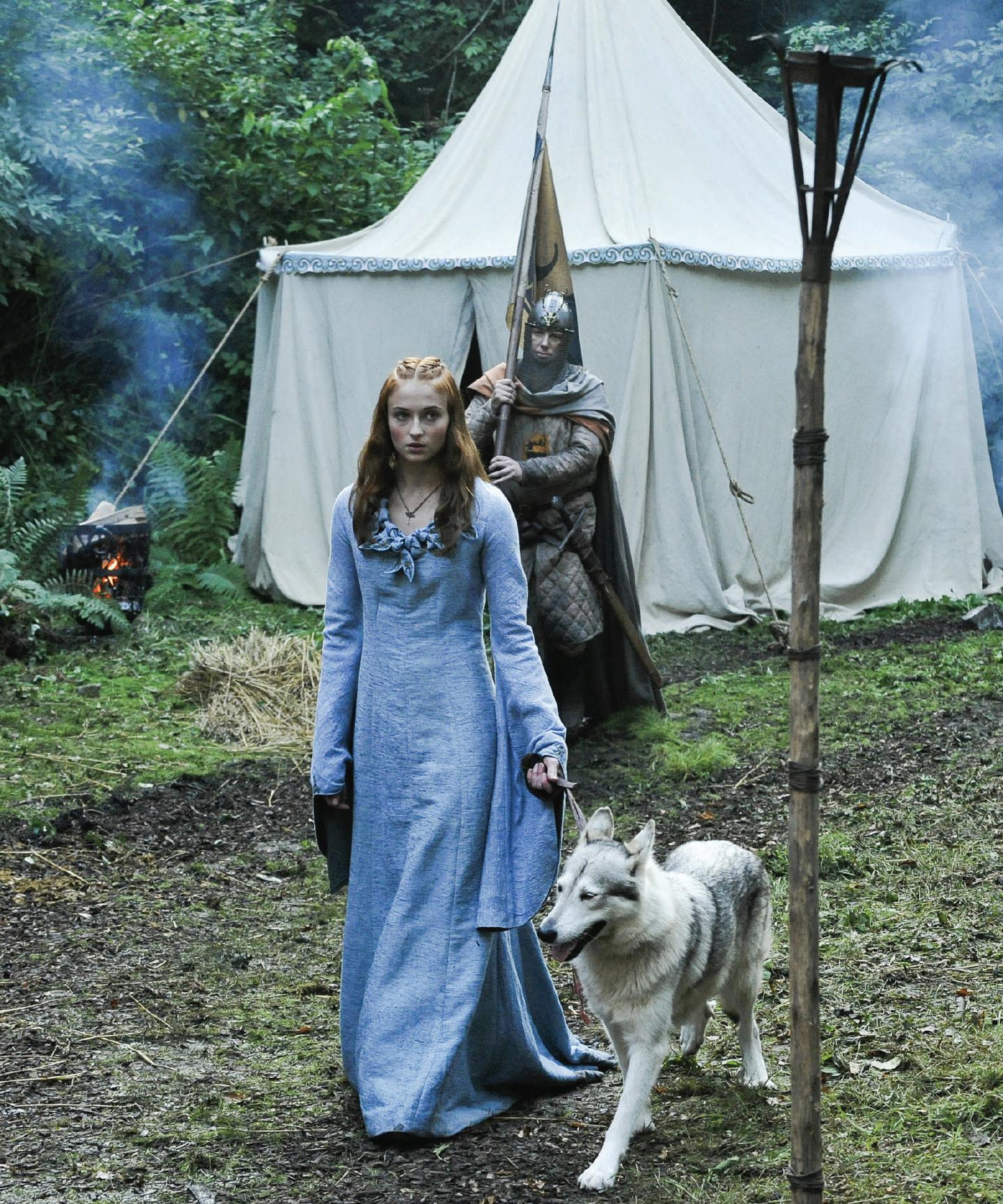
MIDTERMS USHER IN VOTER SUPPRESSION
DIRE WOLVES ON LA BREA?
BELIEVE IT! THE LAST ICE AGE
MARIJUANA MECCA
WEST HOLLYWOOD FINDS THE HIGH LIFE
THE HIDDEN LIFE OF GRANDPA
IMMIGRATION: ACTIVIST LOOKS TO THE SKY ‘NEVER GOING BACK’
PHOTOJOURNALIST BREAKS THE MONOLITH SOUTH L.A.
COLLEGIAN TIMES SPRING-SUMMER 2022
LETTER FROM THE EDITOR
We began work on this issue as we thought about why history is important, and how it can help explain our world today.
Many of the issues we face are not new. They happened along history’s timeline in some remote place or close by.
We searched for moments in time when history intersected with art, culture, activism and even climate change.
Fantasy films and fiction informed our coverage: Dire wolves in L.A.? We “dug” through the La Brea Tar Pits for the answer in our quest to learn how climate change and humans drove ancient species into extinction.
“A Game of Thrones” provided inspiration, and so did “Star Trek”—and Stan Woo, the campus reprographics pro. His fan film, “Yorktown: A Time to Heal,” was more than 30 years in the making. The former cinema student has scooped up 14 awards and counting.
Juan Mendoza trekked 13 miles west of campus to a place city officials hope will become the mecca of marijuana. Do not inhale, but it is history in the making.
And John Johns trudged thousands of miles from campus, through Mexico to El Salvador to give voice to the voiceless. Do not miss, “Remain in Mexico.”
Also on the border, Christian Chavez crossed into Mexico to visit his grandfather, and he discovered his granddad was a one-time activist with a daring plan.
Beatrice Alcala uncovered a time capsule: the pin-up girls from the old ads are still around Burbank and kicking. So are the old cars.

And Joan Mao turns the spotlight on Executive Order 9066, which sent thousands of Japanese Americans to concentration camps—as she followed a play that recalls L.A.’s role in history.
More from Joan as she shifts gears with a futuristic vibe fashion shoot, and changes lanes a third time with a close look at the Justice for My Sister "Video Diaries" comeback.
Those are several of the stories that will take you on a journey between present and past for a fresh take on history.
Without it, we would be lost.
STAFF
Executive Editor
SORINA SZAKACS
Art Director
BEATRICE ALCALA
Copy Editors
BEATRICE ALCALA
DANIEL MARLOS
KATHARINE FORD
Photo Editor
LOUIS WHITE
Reporters
ANGELA JOHNSON
BEATRICE ALCALA
CHRISTIAN CHAVEZ
JOAN MAO
JOHN JOHNS
JUAN MENDOZA
KATHARINE FORD
LOUIS WHITE
SORINA SZAKACS
Photographers
BEATRICE ALCALA
CHRISTIAN CHAVEZ
JOHN JOHNS

LOUIS WHITE
MICHAEL SITAR
Illustrators
BEATRICE ALCALA
CASSANDRA MUNOZ
JONATHAN VALDOVINOS
Multimedia Producers
BEATRICE ALCALA
MATTHEW RODRIGUEZ
SORINA SZAKACS
Advertising Sales
DIANA CAMPBELL
WILLIAM TORRES
Faculty Adviser
RHONDA GUESS

COLLEGIAN TIMES

West Hollywood Competes for Different Crown
By Juan Mendoza
Could cannabis make West Hollywood gay again?
Car Show Brings Nostalgia
By Beatrice Alcala
Rev your engines. Pin-ups and classic cars are all the rage, 8 miles from campus.
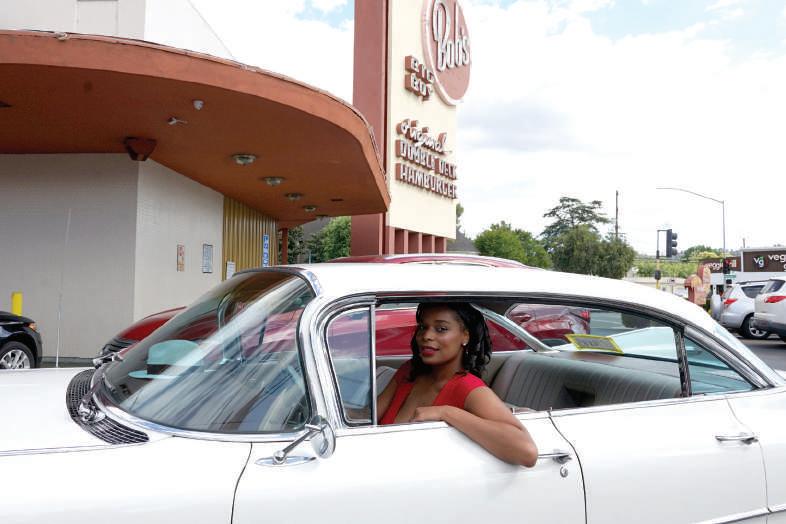
Napoleon’s Highest Honor Goes to City College Alumnus
By Sorina Szakacs
L.A. Times former travel editor popularized destinations around the world.
Voter Suppression Surges Ahead of Midterms
By Angela Johnson
What happens when states change voting policies?
Culture Defines South Central, Geography Limits It
By Louis White
South L.A. residents should break the racial monolith.

Banned By Boston, Burbank, Torched in Tennessee
By John A. Johns
Readers Must Decide What They Consume.
Cats and Dogs Deserve Basic Rights
By Kathy Ford
Opinion: California’s pets deserve consideration and care.
‘Video Diaries’ Return to Justice for My Sister
 By Joan Mao
By Joan Mao
“Sisters” tell personal histories through camera lens.
L.A. Streets Host People’s Art
By Michael Sitar
Murals speak louder than words.
El Salvador: ‘Never Going Back’
By John A. Johns
Threats and violence by gang members who work with police can make life unbearable.
My Grandfather Goes Activist, Voices Chicano Concerns
 By Christian Chavez
By Christian Chavez
Collegian reporter brings family skeletons out of the closet.
Disabled Students Speak Out
By Sorina Szakacs
Blind students navigate obstacles at college when everything goes dark.
La Brea Avenue: Part of an Icy World Now Lost in Time
By Sorina Szakacs
“Game of Thrones” may be coming back, but the dire wolves will not.
Wolf Sanctuary
Wolves abandon their sheep’s clothing in new role as “educators.”
Stardate 1986: ‘Time to Heal’ Materializes 36 Years Later
By Christian Chavez
Awards amass for campus filmmaker's magnum opus.

‘Ruby or not Ruby: Chasing the Moon’
By Joan Mao
Futuristic clothes show designer’s surreal universe.

‘Masao and the Bronze Nightingale’ Directors Hope for ‘Curtain Call’
By Sorina Szakacs
Romance and prejudice intersect and shed light on how historical moments shape communities.
Mask Up
Students speak from behind the mask.
Congratulations, Graduates!
After a two-year hiatus, in-person commencement celebrates the classes of 2020, 2021 and 2022.
The college magazine is published as a learning experience, offered under the college journalism instructional program. The editorial and advertising materials published herein, including any opinions expressed, are the responsibility of the student newspaper staff.




Under appropriate state and federal court decisions, these materials are free from prior restraint by virtue of the First Amendment to the United States Constitution.
Accordingly, materials published herein, including any opinions expressed, should not be interpreted as the position of the Los Angeles Community College District, Los Angeles City College, or any officer or employee thereof. Collegian 2022. No material may be reprinted without the express written permission of the Los Angeles Collegian.

Actress Sophie Turner (Sansa Stark) walks Lady, her dire wolf, through camp on set during Season 1

4 5 Collegian Times SPRING 2022 SPRING 2022 Collegian Times
Los Angeles City College Journalism Program Los Angeles City College Journalism Department Chemistry Building # 208 855 N. Vermont Ave. Los Angeles, CA. 90024
2022 TABLE OF CONTENTS 08 PIN-UPS, CAR SHOW EVOKE NOSTALGIA 44 TO BE OR NOT TO BE RUBY’S RUNWAY 32 DESTINATION, DREAMS DEFERRED 18 RACIAL MONOLITH?
SPRING-SUMMER
ON THE COVER
OF THRONES”
“GAME
06. 08. 12. 16. 18. 20. 23. 24. 26. 28. 32. 35. 36. 41. 42. 44. 48. 49. 50.
PHOTO BY HELEN SLOAN/HBO
BREAK IT
The idea of being able to visit the store and look at the work of local artists and purchase cannabis at the same time seems to appeal to customers.
“Most dispensaries have some flashy stuff, but our store is an art gallery, cannabis dispensary hybrid, where not only do we have a whole bunch of art from local artists from the L.A. area, but we have a whole bunch of local brands from L.A.,” said Zachary Westin, a bud tender at the West Hollywood location. “In general, it’s probably the most unique dispensary.”
West Hollywood is becoming more open to cannabis. The Artist Tree offers delivery or curbside pickup for the shy or private shopper. The dispensary is two years old, but the grand opening of the second-floor consumption lounge came in late April.
“I’ve been up there a couple times,” Westin said. “I have to say it’s definitely one of the coolest experiences where you could just go and sit down and openly consume cannabis with other people.”
The store offers a variety of products with cannabis literally for any type of consumer. From the traditional flower to bath balms with weed, they sell everything. Shoppers purchase pre-rolls that they remove from the box for a quick smoke.
The dispensary prepares cannabis-based concentrated edibles like brownies, gummies, drinks and teas with honey shots.
Westin estimates that a regular customer can spend at least 45 minutes to an hour just looking at items in the store. He welcomes prospective customers who do not consume cannabis or are new to the experience.
“And if you are looking to get high for the first time, come to the store, buy weed and go upstairs to the consumption lounge,” he said. “Try. It is fun.”
Westin says he has been using weed since he was 14 years old. He started out with friends.
COMPETES FOR DIFFERENT CROWN
Tourists and locals clamor to the West Hollywood club scene and the Sunset Strip. Tap the brakes. Shoppers now cruise to cannabis stores, the latest draw.
BY JUAN MENDOZA
Art is the hallmark of the Artist Tree Cannabis Store in West Hollywood.
The marijuana dispensary reeks of design and style and the paintings by local artists engage the clientele. There’s the consumption lounge, which offers the
joy and pleasure to enjoy a “puff, puff and pass,” at the intersection of San Vicente and Santa Monica where the two-story building stands out with “The Artist Tree” on a large marquee. A Yelp notice refers to the spot as “super cool” and one of the top cannabis stores in California.
“It’s just a plant that we consume now, and we enjoy for its multitude of benefits,” Westin said.
Cannabis Mecca Helps Alleviate Pain

West Hollywood has flash—as a sort of capital of gay life. It is perceived as progressive and liberal. It has gained fame for its colorful nightclubs, restaurants, art and music venues, and now, for the use and sale of cannabis. The city is less than two miles square, but with a high concentration of cannabis businesses.
City officials plan to rebrand West Hollywood as the cannabis mecca by approving as many as 40 cannabis permits this year.
A five-minute walk from The Artist Tree, AHHS Dispensary is open for business on Santa
of things,” says a woman who preferred to be identified only as Ruby. “It treats my insomnia, nausea and the pain from severe chronic migraines. … It treats my social anxiety disorder. And it treats my pain from fibromyalgia.”
Ruby received the diagnosis that she suffers from fibromyalgia in 2011. She says simple movements at home became a challenge. She felt frustrated and overwhelmed at her family’s lack of understanding. She took aspirin for the pain, and it did not help. She tried a marijuana joint, and it changed everything.
“And there’s so much more it works for,” Ruby said. “I can’t understand how marijuana is illegal in most places. Tobacco and alcohol kill thousands each year and they’re both legal. Medical marijuana should be legal everywhere.”
The symptoms and the pain from her illness went away as time passed and the consumption of cannabis increased. She says she got her life back.
Ruby is well informed about the different types of cannabis, the taste and its effects.
“It’s an acquired taste that you develop through the years,” she said.
California Sets Tone for Cannabis Industry
Crafted on Crenshaw Gorilla Rx Wellness dispensary opened its doors a few months ago in the Crenshaw District in South Los Angeles as a community-oriented cannabis store. A percentage of the profits go back to the community and to the nonprofit organizations that serve immigrant families. Owners say it is a center for African culture and Black business.
“We are a family-inspired company that was built out of the authenticity and integrity of a recipe that was made of pure love,” said Kika Keith, the founder of Gorilla Rx. Keith is the first African American woman granted a license in Los Angeles to operate a cannabis store. Cesar Alvarado is the store manager. He says they had to fight for the license.
“We protested and marched at City Hall,” Alvarado said. “We sued the city for corruption because most licenses were given only to a white man and corporations.” People from Georgia, New York and South Carolina shop here. They find the store through Twitter or other social media. The management says demand is so high that the store is open daily.
Zen is a Vibe. Zen is Your Happy Place. Every cannabis store is unique and has its own characteristics to target cannabis users.
Monica Boulevard. It’s been there since 2001, long before cannabis dispensaries were legal in California. The inventory of cannabis products is extensive, and the location offers discounts to buyers on the last Sunday of the month.
“The store has the commitment to provide its customers and patient members with natural alternatives to treat their pain and illness with a large selection of highest quality clean medicine at reasonable prices,” said Lacee Boyd, a human resources and assistant sales floor manager at the dispensary.

West Hollywood will have to work hard to beat the competition. Cannabis Stores are popping up in L.A. neighborhoods like Starbucks coffee shops with the most imaginable style and design with a large, curated variety of products. The product also fits specific needs, according to a customer who uses it to alleviate chronic pain. Research studies have found that cannabis can help the person to alleviate a variety of medical conditions, including anxiety, chronic pain, and epilepsy.
“I am a medical marijuana user, and I can testify to the fact that it works for a wide array
California was the first state to legalize marijuana for medical use in 1996, and California voters approved the Adult Use of Marijuana Act 10 years later. It legalized the use and cultivation of recreational cannabis in California for adults 21 and over.
While cannabis is legal in 16 states, it is still considered an illegal drug under federal law. Los Angeles is known for many features: beaches, climate and the movie industry. It is also evolving into one of the largest cannabis markets in the world. The cannabis industry is on a fast track. Business owners, cities and entrepreneurs are rethinking ways to cater to their clientele.
According to Arcview Market Research, the cannabis industry is the fastest growing industry in the United States—and 74 percent of the business is recreational, far from its illicit roots and closer to legal retail legitimacy.
The worldwide market value last year reached $13.2 billion, according to Grand View Market Research.
Weed Bus Tours
Users and non-users who want to explore and learn first-hand about the operation of cannabis can join a cannabis bus tour. The bus company offers different packages with wine, and a preroll for a penny. The cost of the trip varies based on the desired package. ∫
“Zen has been here for the last 18 years,” Brandon Herring, the store manager at Zen, said. “We’re one of the first dispensaries in California and we are in a coalition of cannabis companies called Emerald Village.”
According to Herring, city officials, business leaders and investors are working to rebrand the City of West Hollywood as the cannabis mecca or the emerald village. He says the city will soon become “a modern-day Amsterdam,” where people go to lounges and try the best cannabis products dispensaries sell.
Cannabis Café – America’s First Cannabis Café
The Cannabis café is a welcoming space to both cannabis connoisseurs and to those who are “canna-curious”.
The menu offers everything from pre-rolls, flowers, small edibles and beverages.
Chef Andrea Drummer designed a menu to enhance the cannabis experience and the patrons’ sense of taste and smell. There are no infused dishes on the menu because of current cannabis legislation. At the café, customers have the liberty to decide if they consume cannabis with their meal.
One of the social missions of the cannabis café is to hire non-violent cannabis offenders who were pardoned. They also offer resources to individuals who wish to enter the cannabis industry.
6 7 Collegian Times SPRING 2022 SPRING 2022 Collegian Times
PHOTO ILLUSTRATION BY BEATRICE ALCALA
PHOTO BY JUAN MENDOZA
Sales Manager Lacee Boyd shows the selection of products at the AHHS West Hollywood cannabis store. AHHS offers “Happy Hour” and a 20% discount every day from 1:00 to 4:20 p.m.
CAR SHOW NOSTALGIA BRINGS
BY BEATRICE ALCALA PHOTOS BY BEATRICE ALCALA
The culture of pin-up girls started in the early 1800s. This art form exploited women’s sexuality and catered to the fantasies of men. Promoters used posters, calendars and post cards as a way to advertise theatrical shows and burlesque acts. The early pin-up art was produced through illustrations. Drawings and primitive photography were among the techniques that preceded mass-produced photography.
Women supported and critiqued the objectification of women in pin-up girl art and culture as far back as 1869. Some women considered the art style a healthy rejection of “post-Victorian body-shaming,” according to American historian and author Joanne Meyerowitz.
By the early 20th century, Hollywood noticed the popularity of the art form and began to produce posters to promote movies.
Pin-ups went big by the 1940s, and pinup girls expanded their role to images on airplanes and submarines during World War II. By the arrival of the 1950s, the industry went big. Iconic stars like Rita Hayworth, Greta Garbo, Betty Grable, Jane Russell and Ida Lupino stared back at fans from posters, calendars and magazines.
In 1953, Marilyn Monroe—the ultimate pin-up girl—appeared in the pages of Playboy.
Pin-up girls inspired the production of Playboy.
Women of color were overlooked in the mainstream media. Josephine Baker was one of the first Black pin-ups who had a successful career in France and became an icon in Europe. She was part of the French resistance during the Nazi invasion of France in World War II.
At the end of 1950s and the beginning of the 1960s, the pin-up girls were associated with muscle cars and hot rods. They still are today.
The nostalgia of the pin-up era is as close as Toluca Lake. Bob’s Big Boy on Riverside and Rose Street is housed inside an iconic art deco building, one of many spots in So-Cal where pin-up girls and car culture meet. Pin-up girls and classic car drivers attend “The Car Show” every Friday at 4 p.m., for an evening of fun and networking. The building is walking distance from the famed Warner Brothers Studios.
Page 8-9:Model Lynn James stands at the back of a 1961, fourdoor white Cadillac with whitewall tires and gray interior. ∂

8 9 Collegian Times SPRING 2022 SPRING 2022 Collegian Times
Page 10: Lynn James leans against a 1956 Ford black pickup truck, hood modified by the owner with chrome wheels.
Page 11: Lynn James blows kisses from a 1939 burgundy Chevrolet Master Deluxe Town Sedan.
1. The nose of a B-25J Mitchell forms a canvas for pin-up girl art on this bomber named to honor General William Mitchell.

2. Artist-illustrator Harry Wann creates pin-up art for a U.S. Navy PT boat in Australia in 1944. The nimble boats engaged enemy warships during World War II, sometimes splashed with pin-up girl art.
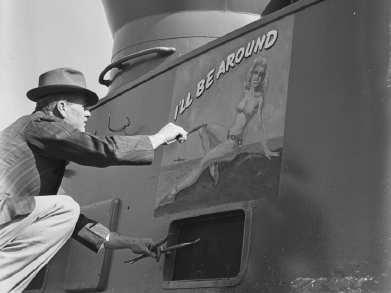

3. Josephine Baker became the toast of Paris and a notable pin-up girl in the Folies Bergère burlesque shows in 1927. She later became a spy for the French Resistance in World War II.


10 11 Collegian Times SPRING 2022 SPRING 2022 Collegian Times
1
3
PHOTOS COURTESY WIKIPEDIA.ORG
2
miraculously managed to complete the journey,” Richard said. “By the time my father returned home, he had written 22 stories for the paper.”
Hulse joined Ford on a second trip the next year. Ford attempted to fly a two-engine De Havilland Dove airplane over the Atlantic Ocean to Europe.
“During the flight, both motors iced up, and with the knowledge that one can die within four minutes in the frigid waters of the Atlantic, they barely made it to Iceland,” Richard said. “My father flew back home courtesy of the United States Air Force.”
Ford invited Hulse to join him on a third trip, but Hulse refused because he could not get more time away from the newspaper. The third trip was fatal for Ford. His plane exploded shortly after takeoff on Wake Island.
Hulse Finds Love in Wartime
spot, but could not break in time.
“I took off like Superman flying [backward], and landed on top of a car in the lot next door. The boys gave me my check and waved goodbye,” Hulse wrote in his book.
The incident was a turning point for Hulse. He decided to enroll in college and look for a career path that would help him take care of his family. He attended classes at Los Angeles City College during the day and worked the nights in a fender shop.
During college, he worked on the campus newspaper, the Collegian as a reporter.
“When I graduated I got a job on a newspaper, covering every story you can name--kidnappings, robberies, murders,” he wrote in his book. “I even reported on the Berlin crisis. Later I got a roving assignment that kept me on the move (still does), traveling around the world to nearly any place you can name.”
Napoleon’s Highest Honor
Goes to City College Alumnus
BY SORINA SZAKACS
When Apollo 11 landed on the moon in 1969, Jerry Hulse had already written almost a decade’s-worth of travel reporting for the Los Angeles Times, stories that not only won him awards and recognition, but opened new windows onto the world for Angelenos.

As the “gentleman traveler” of the L.A. Times, Hulse transformed his love for travel into a successful career and managed to reshape California and the world’s tourism in an unprecedented way.
Two decades into his travel-writing endeavors, Hulse received the Insignia of the Chevalier de la Legion d’Honneur awarded by François Mitterrand, the French president at the time.

Napoleon Bonaparte established the Legion of Honor in 1802. The honor is awarded to those
who contribute to France’s prominence. It is the highest award the French government bestows.

Hulse received the insignia from French Minister of Tourism Jean-Jacques Descamps at the French Consulate in Beverly Hills on Oct. 12, 1987.
Descamps described Hulse as “a Californian who has demonstrated continued friendship through the media,” according to an L.A. Times article about the ceremony.
Hulse first visited France in 1951, while he was writing for the Valley Times.
“The love affair with France began then and has never lost its ardor,” he told the L.A. Times after he received the honor.
Travel Around the World Propels Career
Hulse became a famous travel reporter after he published a series of stories, according to his son Richard. He accompanied Jack Ford, a former Air Force World War II fighter pilot who ferried
airplanes for a living, on two trips around the world in 1951 and 1952.
“Many times over the years, my father shared these adventures with anyone who’d lend him an ear,” Richard said. “I remember him telling me, ‘Dickie, before I went on the first jaunt, my idea of a trip was driving from North Hollywood to Van Nuys. My anticipated ten days away from home flying with Jack ended a month and three days later. I wasn’t sure I’d have a job once I returned home.”
During Hulse’s first trip around the world, the plane lost radio contact with air traffic controllers between Wake Island and Guam, according to his son. In Athens, a starter broke. They had problems with the radio again between France and England. On a flight from Scotland to Iceland, an engine broke and Ford flew the plane back to Scotland.
“Between Iceland and Greenland, black oil started sputtering out of the engines, but the pilot
Jerry Hulse was born in Grand Junction, Colorado on Sept. 5, 1924. His family crossed the Rocky Mountains when he turned three. They first moved to Hermosa Beach, then across the street from the Hollywood Bowl and later settled in a house in the San Fernando Valley. Hulse attended Lankershim Elementary School, where, according to his son Richard, he excelled in art and creative writing.
Hulse was only 17 when he first met his future wife Josephine “Jody” Carr. While the United States declared war on Japan after the Dec. 7, 1941 Pearl Harbor attack, Hulse cruised Magnolia Boulevard in North Hollywood in his vintage Ford.
“It was a chill December morning in 1941, when I first saw her,” Hulse wrote of his wife in his book “Jody.” “She was small, with a pink ribbon in her hair, and as far as I was concerned she was the prettiest girl I’d ever seen. Every morning for a couple of weeks I offered her a ride. Finally she accepted and we began dating. I think I fell in love with Jody the first time she got into that car. She was different from other girls I’d known. She was quiet and withdrawn, with an innocence that was rare even in the winter of ’41. I promised myself that someday I would marry her.”
They dated, went to dances together and exchanged letters while Hulse was in the Navy. Four years later, they married.
They drove to San Francisco for the honeymoon. In [Half Moon Bay], they only found a grocery store so they had “jelly rolls and [Pepsi Colas],” as a wedding breakfast.
Marriage Fuels New Career
Three days after the wedding, Hulse returned to work as a parking attendant, a job he lost the same day. He drove “an old Packard” to a parking
Hulse joined the Los Angeles Times in 1952 as a crime reporter. Eight years later, he became the newspaper’s travel editor. He wrote weekly travel columns that changed the tourism landscape from the 1950s until the early 1990s.
The School of Travel Industry Management from the University of Hawaii at Mānoa named Hulse “Legacy in Tourism” honoree in 2008.
“Hawaii’s tourism industry owes a huge debt of gratitude to talented writers like Jerry Hulse who have been able to capture the magical allure of the islands,” the announcement states. “When Jerry began writing about the islands, there were just about 300,000 annual visitors. By the time he retired, Hawaii was welcoming more than 6 million … and one out of every five of them was from California.”
Christopher Reynolds, staff writer for the L.A. Times, met Hulse at the beginning of the 1990s. Reynolds was at the starting point of his career while Hulse was heading to the finish line.
“We met in old Times headquarters on Spring Street when I was 32, just starting out as the paper’s travel writer, and Jerry was 68, about to retire after 32 years on the road,” Reynolds said.
“He was always courtly and fit, a keen listener. He could also be a demanding editor. And he was always determined that his hard work gathering, writing and shaping stories should look effortless to readers on Sunday mornings.”
Hulse
Goes on a Quest
Reporting skills helped Hulse save his wife’s life in 1974. Like an epic hero, Hulse overcame several trials in his quest to find Jody’s biological mother. The doctors told him that medical history information would be crucial to his wife’s treatment.
A year later, Hulse published “Jody,” a book that tells the story of the search. The book was
12 13 Collegian Times SPRING 2022 SPRING 2022 Collegian Times
IN THE COURSE OF A CAREER THAT TOOK HIM AROUND THE WORLD MORE TIMES THAN HE COULD COUNT, ON CONVEYANCES FROM CRUISE SHIPS TO THE CONCORDE, HULSE WON HONORS FROM ADMIRERS RANGING FROM THE PROPRIETORS OF GRAY LINE BUS TOURS TO FRENCH PRESIDENT FRANÇOIS MITTERRAND. AND IN THE PROCESS, TRAVEL INDUSTRY VETERANS SAID, HULSE PLAYED A CRUCIAL ROLE IN THE SHAPING OF AMERICAN THINKING ABOUT TRAVEL.”
Christopher Reynolds, staff writer for the Los Angeles Times
Jerry Hulse’s son Richard
PHOTO COURTESY RICHARD HULSE
PHOTO BY LOUIS WHITE
published in 15 countries and made into a TV movie, according to the L.A. Times.

While searching for information about Jody’s biological family, Hulse encountered many obstacles reporters face every day.
“As a reporter, I’d been bullied before by martinets secure in their world of civil service, dealing with human beings as if they were entries in a ledger,” he wrote in his book. “Long ago I’d learned that you don’t argue with these people. You sidestep them.”
He only had six days, but he succeeded. His perseverance prolonged his wife’s life for 20 years.
“This is the story of a handful of people and what happened to them,” Hulse wrote in the preface of his book. “It is also, I see now, the story of hundreds of thousands of Americans still seeking their own true names, each a nomad searching for the place in blood and in spirit from which he or she came.”
4H Club Meets in Heaven
Hulse wrote his farewell column for the Los Angeles Times when he retired on June 7, 1992.
“The time has come to take my leave-to surrender this space to others with fresh dreams and young ideas. … And so on this final Sunday of writing my Travel Tips column, I ask your indulgence while we journey together down Memory Lane,” Hulse wrote.
He ended his column and his career as a travel editor with the line: “Well, time to go. It has been memorable and I shall miss you.”
Hulse retired to Kauai. His biography on the “Legacy in Tourism” 2008 honorees page mentions Hulse’s last column for the Times. “My Own Private Paradise” was published on March 1, 1998.

“Jerry’s credibility as a travel writer came from his uncompromising ethics and style that was both poetic and honest,” the biography states.
“As for his ethics, unlike many of his travel writer contemporaries, Jerry did not accept complimentary travel and lodging when he wrote his stories. Everything was on the Times and every story was clear of any conflict of interest.” Reynolds says Hulse was a “fascinating fellow who had a remarkable career.” He also said that Leslie Ward succeeded Hulse as a travel editor for the Times. She remembered that Hulse was part of an informal group of travel writers and editors. “They called themselves the 4H club, because they each had a last name beginning with H, and they sometimes traveled as a pack in the 1970s and 1980s,” Reynolds said.
Georgia Hesse, travel writer for the San Francisco Examiner was one of the four. She
IT IS DAWN, AND SAVE FOR THE SOUND OF OCEAN WAVES WASHING
BENEATH MY WINDOW, MY WORLD IS AS SILENT AS A SHINING STAR. LAST EVENING IT RAINED SO THAT TODAY THE SKY IS AS BLUE AS A YOUNG GIRL’S EYES. ALL WOULD BE WELL IF ONLY THAT INFERNAL ROOSTER WOULD STOP CROWING AT MIDNIGHT.”

died earlier this year. The other two members of the group were Kermit Buss Holt of the Chicago Tribune and Bruce Hamby of the Denver Post. Reynolds wrote Hulse’s obituary in the L.A. Times on Jan. 26, 2002. Hulse died a day prior, of complications after double hernia surgery. He was 77.
Late James Murphy, chairman of Chatsworthbased Brendan Tours, quoted in Hulse’s obituary said that the latter had power to motivate anyone to travel.
“People took his word as absolute gospel,” Murphy said. “When we started operating in Ireland in 1973, Jerry put a little piece in the [Sunday] paper. We took over 3,000 telephone calls on that Monday. All from just a sentence or two.”
Reynolds wrote in the obituary that peers remembered Hulse as “a fastidious researcher, a chronic worrier, a great lover of the tropics and a writer who suffered quietly in the creation of
prose that seemed graceful and carefree.”
A Columbia Journalism Review article reported in 1970 that Hulse was “widely considered to be the best travel writer in the country,” according to Reynolds.
The late Georgia Hesse remembered meeting Hulse on her first trip as a travel writer, at a conference in Indonesia in 1963.
“He was already very famous, and I was so afraid, because I was in my 20s and meeting all these people,” Hesse told Reynolds. “And he was the first to come over and say hello. He was just the soul of politeness and cordiality. He would open doors, and pull out your chair, and stand up when you came to the table, which among newspaper people is not necessarily the usual practice.”
Richard remembered his father wrote eight drafts before editors accepted one of his articles.
“Writing wasn’t easy for him,” Richard said. “But when he did it, he did it well.” ∂
14 Collegian Times SPRING 2022
“MY OWN PRIVATE PARADISE”
Jerry Hulse March 1, 1998 Los Angeles Times
PHOTO BY LOUIS WHITE
turnout rates have consistently rivaled turnout rates of whites, particularly white men.”
Presumably, this factoid is what has lawmakers and politicians in swing and battleground states riled up.
Jim Crow 2.0 in 2022
Since the 2020 presidential election, Arkansas has passed four multiple restrictive voting laws. The new laws, among other restrictions, change the state’s voter ID law.
Republicans in swing and battleground states seek greater power at the legislative level. To accomplish this, they must maintain control of the Senate and win control of the House.
Pennsylvania filed 13 lawsuits to recount ballots cast in the 2020 election. Nine of them were dismissed without comment, lack of evidence or the Supreme Court declined to hear the case.
SURGES AHEAD OF MIDTERMS VOTER SUPPRESSION
BY ANGELA JOHNSON ILLUSTRATION BY CASSANDRA MUNOZ

Voter suppression has entangled democracy and politics like an octopus for over a century.
African Americans in the United States have fought the beast since the founding fathers added the 15th Amendment to the Constitution in 1870. It forbids “any state to deprive a citizen of his vote because of race, color, or previous condition of servitude.”
But voter suppression usurped that right by preventing Blacks from exercising their newlyendowed right to vote more than 150 years ago.
As the 2022 Midterm elections approach, the tentacles of voter suppression constrict the very workings of election operations and threaten to derail democracy at the ballot box.
All the while, Donald Trump and his political lemmings repeat the “Big Lie” that the 2020 election was stolen by voter fraud. States adopt hundreds of new voting laws and election operations to ensure the “Big Lie” does not reoccur in 2024.
Voter Suppression 101 Explained
Voter suppression is a strategy to discourage or prevent specific groups of people from voting, usually Black, Indigenous and People
of Color (BIPOC). The Anti-Defamation League defined voter suppression laws as tools “used to impact the outcome of an election by discouraging or preventing specific groups of people from voting.”
In the 1950s and 1960s, voter suppression manifested as intimidation, beatings and the murder of would-be voters. California’s Secretary of State Shirley Weber, Ph.D., is the daughter of sharecroppers.
“My parents were the victims of voter suppression when they lived in Arkansas,” Weber said. “My grandfather never got a chance to vote and my grandmother never voted because they died before the Voting Rights Act of 1965.” Weber’s father moved the family away from Arkansas after he was threatened by a lynch mob. He did not have the opportunity to vote until he was in his 30s.
“And it wasn’t that they didn’t have the right to vote, as some people think—that the Voting Rights Act of 1965 does—but that’s not true,” Weber said. “What it does, it prevents voter suppression, it prevents people from creating rules and regulations that make it hard for you to vote.”
Weber says voter suppression often goes unrecognized.
“And we don’t understand it, and therefore it is able to sneak into our system without much fanfare,” she said. “And when we look up, we will
discover that we are victims of it, and it’s very deadly.”
By last fall, 19 states had enacted 33 laws that will make it more difficult for some Americans to vote, according to the Brennan Justice Center, a nonprofit public policy center at New York University.
“Voter suppression is there when people say, ‘Well you know we’re [going to] make lines longer for you, we’re going to make it harder for you to get a vote by mail ballot,’” Weber said. “In other words, they will create obstacles so that your voting numbers will go down, and your access will be limited.”
‘Warriors’ Fight for Voting Rights
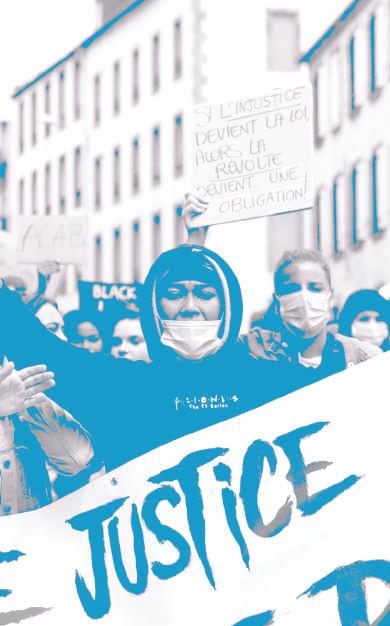
Civil rights activist Fannie Lou Hamer was born on a plantation and was 45 years old when she left a life of sharecropping to fight for voting rights in Mississippi in 1962. She inspired other sharecroppers to register to vote, join labor unions and form co-ops.
“I never knew we could vote before,” Hamer once said. “Nobody ever told us.”
She was beaten, arrested and shot at for registering people to vote in her community.
Plantation owners kicked her off the property when she became an activist for the Student Nonviolent Coordinating Committee. It inspired her to continue her vital voter registration work. Since Weber, others now follow Hamer’s
example. Pennsylvania’s Secretary of State (SOS) Leigh Chapman and New Jersey’s SOS, Tahesha Way are mentees of Weber and consult with her to ensure 37 million people in their respective states have a clear path to the ballot box. Their job is to secure voting infrastructure and oversee the elections. The non-partisan position of secretary of state is viewed through high-profile crosshairs as the battle over voter access rages.
NBCBLK.com’s Randi Richardson reports that Weber, Chapman and Way work to increase voter participation and eliminate voter suppression.
“We’re one of the largest voting blocs in the country,” Chapman said. “The way Black women vote really determines the outcome of many elections at the state level and at the federal level, and we are not represented equally in political office.”
An in-depth analysis of the political lives of Black women published by Clark Atlanta University titled “#Blackgirlmagic Demystified: Black Women as Voters, Partisans and Political Actors” identified African American women as a force to be reckoned with, indeed.
“Black women are the most loyal Democratic voting [bloc] in the United States. The phenomenon started way before Donald Trump became president,” the report states in the introduction.
The article documents how “Blacks have historically voted less often than whites because of discrimination or voter suppression. Black turnout increased in 2008 and 2012 because of Barack Obama’s candidacies.”
The article illuminates the fact that in the last six presidential election cycles “Black women’s
The filibuster is a political move Senate Republicans have used recently to block the progress of legislation that will serve the needs of the people, namely the JLVRA. It’s a strategy used to block advancement of expansive voting legislation in Congress on a regular basis.
Democratic Senators Kyrsten Sinema of Arizona and Joe Manchin of West Virginia have repeatedly gone on record pledging their support for the filibuster. The Senate voted 48-52 against changing the chamber’s filibuster rules.
November 2021 saw every single House Republican vote against the JLVRA. In the Senate, the bill did not receive the 60-vote threshold needed to defeat the filibuster. Because the filibuster is still intact, JLVRA has no path forward now.
“Voting integrity” has become a popular catchphrase for Republican lawmakers as motivation for this “fast and furious” round of new voting legislation.
Officials in Arkansas, Florida, Iowa, Kansas, Kentucky, Montana and Texas have all enacted laws that restrict assistance in returning a voter’s mail ballot for a senior citizen or disabled person.
Florida and Georgia have banned snacks and water for voters waiting in line.
According to the “Voting Laws Roundup” from the Brennan Center for Justice, 27 states introduced, prefiled, or carried over 250 bills with restrictive provisions at the beginning of this year.
Lawmakers in Arizona, Virginia and Washington legislatures have proposed five bills that impose new proof of citizenship requirements to vote.
Last year, there were a number of bills that could “enable partisan interference in election administration,” the report stated. The most extreme “election sabotage” bills would have allowed officials to simply reject election results.
Filibuster vs. John Lewis Voting Rights Act
Whenthe John Lewis Voting Rights Act (JLVRA) was blocked by filibuster in the Senate, Senate Majority Leader Chuck Schumer, D-NY, acknowledged “a coordinated assault on the right to vote and even how elections are conducted, tallied, and potentially decided.”
He characterized that as “a true threat to the ultimate foundation of our democracy.”
The JLVRA received negligible support from Senate Republicans. Every member of Congress, Republican or Democrat, who voted against greater access to the ballot box can be voted out of office. Therein lies the immense power of the vote and why so much effort historically has gone into suppressing that of BIPOC.
That legislation would replace part of the 1965 Voting Rights Act that the U.S. Supreme Court removed in 2013 and aims to restore Department of Justice (DOJ) review of changes in election law in states with a history of discrimination. That provision is known as preclearance, and it has proven to be a point of contention for Senate Republicans.
Litany of Laws Limits Voters’ Rights
The 2020 presidential election brought a massive voter response despite COVID-19, and propaganda spread about vote-by-mail being ripe for fraud.
In April 2020, pandemic concerns gripped the country. Former President Donald Trump planted seeds of mistrust and doubt about mail-in ballots during a White House news conference.
“Mail-in voting is horrible, it’s corrupt,” Trump said. “Mail-in voting is a terrible thing . even the concept of early voting is not the greatest.”
Students: Time’s Up on Non-participation
Oneof the main rewards of the Civil Rights Movement was the Voting Rights Act of 1965. Every American benefits. A lot of work helps identify new and firstgeneration voters. Outreach efforts in California high schools pre-register students between the ages of 16 and 18.
“We are making sure they have all the information they need,” Weber said. “We are also encouraging them to work at the polls, because once they begin to work to help others vote, they realize how important it is.”
The California SOS Office of Outreach conducts the “Ballot Bowl Competition” at all the California State University, University of California, community college campuses and private institutions.
“Right now, one of our greatest challenges in voting with regard to low percentages is really in our college-age students between the age of 18 and 35,” Weber said. “And so, we are working hard to make sure they go to polls and understand the importance of voting.” ∂
16 17 Collegian Times SPRING 2022 SPRING 2022 Collegian Times
“Culture Cures” is the title of the mural painted on the wall of a brick pre-World War II building that pays homage to the Black Panther party at 41st Street and Central Avenue in historic SouthCentral Los Angeles.
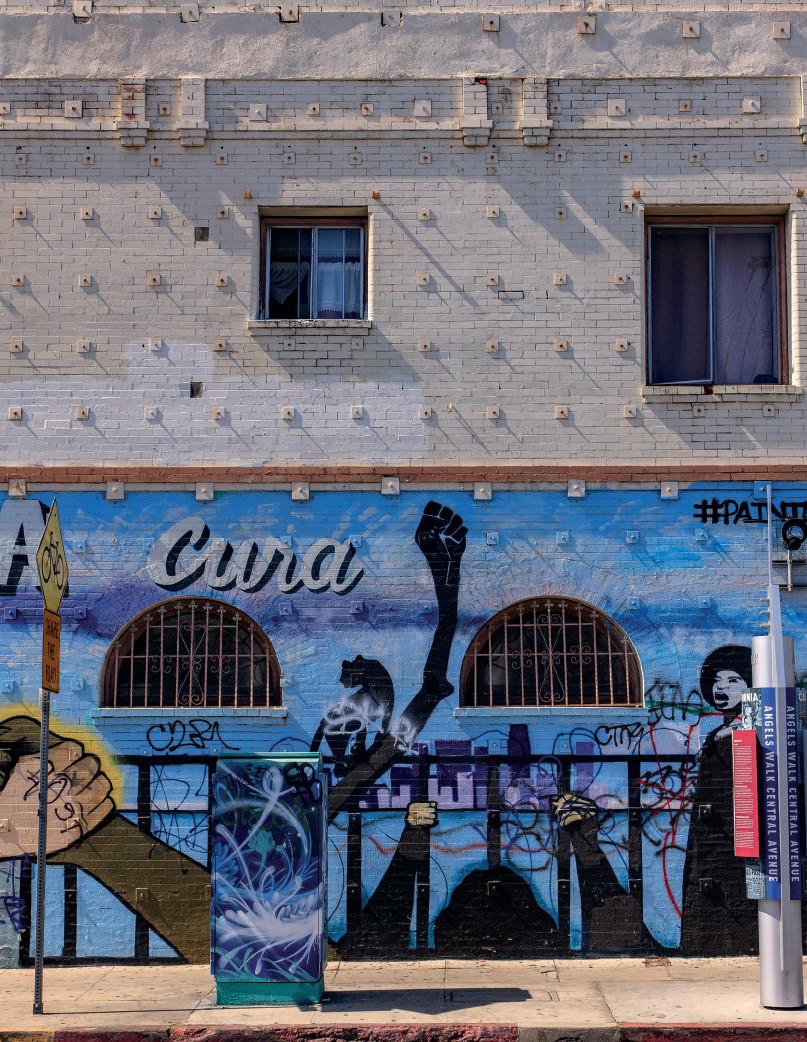
Central to South Los Angeles in 2003, according to a KCET report. The perception of South Los Angeles as a haven for something “less” crossed the ocean.
The British press did not make the distinction between the historical and geographical South L.A. In an article published by the Daily Mail in Sept. 2016, titled “(Almost) Straight out of Compton,” reporter Ruth Styles wrote about the area where Meghan Markle’s mother lived.
“Plagued by crime and riddled with street gangs, the troubled Los Angeles neighborhood that Doria Ragland, 60, calls home couldn’t be more different to London’s leafy Kensington.” Markle’s mother lived in the Crenshaw neighborhood of View Park, where houses list from $800,000 to $2 million. The homes are mainly mid century gems with oddly shaped swimming pools and sweeping views of the downtown L.A. skyline. The majority of the homeowners there are Black.
Race Trumps Location, Geography
Crenshaw Boulevard stretches 23-miles long. Cars travel the boulevard from Mid-Wilshire near the affluent Hancock Park area to the north through Central Los Angeles. It passes the Crenshaw district that includes View Park and Windsor Hills ending in the affluent Rolling Hills area in Palos Verdes. Crenshaw is a boulevard crossing a cluster of neighborhoods, not a city. In other words, most anywhere there are African Americans east of the Interstate 405 is regarded as “South Los Angeles” culturally and often with a derogatory connotation.
Compton, Inglewood and Long Beach all border cities with similar demographics and similar stories. Geographically, they are not South Central. Some people in these places live mundane, ordinary lives. Others have interesting and even extraordinary lives that have nothing to do with the popularized imagery of movies, music or even real life events like the 1992 unrest. Travis Lacy is a writer and doctoral candidate of African American music and culture.
Culture Defines South Central
GEOGRAPHY LIMITS IT
BY LOUIS WHITE
South Central Los Angeles is not just an invisible part of the city that some avoid at all costs. It is not just a place surrounded by stigma created by outsiders.
Historic South Central Los Angeles is a 2.55 square mile region that looks like a piece of
a puzzle. The area is
Angeles as Washington Boulevard marks the invisible limit between the two, and by Vernon Avenue to the south, the Harbor Freeway to the west and historic Central Avenue to the east.
Tom’s Market, a brown-brick building with a green roof stands one-story high, steps away from the intersection of Florence and Normandie Avenues. The building is located at the epicenter of the infamous 1992 unrest caused by the verdict in the Rodney King trial. It sits within the imaginary border of cultural South Central, but it is outside of the 2.55 miles that define historic South Central geographically. Baldwin Hills-Crenshaw-Leimert neighborhoods are also located outside of that perimeter. The city council changed the name of South
“South Los Angeles is not unlike many other L.A. neighborhoods,” Lacy said. “There are multiple types of people … that hold all sorts of employment positions from simple retail positions to management, hospital staff, nurses.” South L.A. properties with mortgages account for 76 percent of homes. The median value of a home with a mortgage there is $467,350, according to Point2Homes.com, an Internet real estate site. Lacy says South Los Angeles is working class, and it is not so different from other L.A. neighborhoods.
“It has its collection of well known people as well, Ray Charles, lived not too far from here, in the Baldwin Hills-View Park area,” he said. “Tina Turner and her husband [Ike Turner], Stevie Wonder had a house up there too … it burned in a fire.”
However, there is crime, and there are street gangs, illicit drugs and violence.
African Americans are the image of “who” lives in South Central Los Angeles, but they make up a mere 10.1 percent of the population of the historic core South Central Los Angeles, according to the 2000 U.S. census. Latinos are at the top with 87.2 percent.
South Central Los Angeles has never been “ghetto,” by definition. The “Black Beverly Hills” as it has been called in the past, Baldwin HillsCrenshaw District along with Leimert Park are the only areas in the city that are predominately African American. Windsor Hills, Baldwin Hills and Ladera Heights are the most affluent African American areas on the West Coast. However, African Americans’ place in South L.A. continues to disappear.
James W. Johnson has been a resident of South Los Angeles for almost seven decades. He and his family migrated to South Los Angeles from a small town in Texas in 1955.
“That’s the biggest problem the Black community is having right now, getting [their] parents’ leftovers, and selling them, ” Johnson said. “I had a buddy of mine, he sold his [grandma’s house], a duplex. He was living in one of ‘em rent-free for years. For years, but his grandmother passed away. He sold the house and moved to Moreno Valley.”
History and Culture Live in South L.A.
The Crenshaw District became home for many Japanese families after race-based housing covenants were ruled unconstitutional and
unenforceable. Not illegal, just unenforceable.
Pre-WWII South Central Los Angeles was diverse, very much like the farther eastern neighborhood of Boyle Heights. Blacks, Japanese, Italians, Mexicans, Chinese and Jews all lived together, as they were not allowed to live in the whites-only areas of the city.
Lacy grew up in South Los Angeles and in the unincorporated area called Lennox, south of Inglewood near LAX. Lacy, his wife and baby daughter moved into their 1922 Spanish revival bungalow in South Los Angeles near the Los Angeles and Inglewood border in 2005. Their purchase is located one mile away from the epicenter of the 1992 Los Angeles uprising. He says his neighborhood is “pretty quiet” and most of his neighbors are elderly.

“The neighborhood does not fit into what you might normally hear about in South Los Angeles, [as] far as drugs and violence or anything like that. It’s been pretty quiet,” Lacy said. “[The elder neighbors], they moved in here before the 1966 restrictive covenants were removed and have been here ever since.”
South L.A. is home to more than 140 architecturally and historically important places, like the 80-year old Vision Theatre in Leimert Park. The Spanish style art deco movie palace was once operated by Fox West Coast Theaters, according to culturela.org. The Los Angeles Coliseum, site of the 1932 and 1984 Olympics, the Watts Towers—a group of 17 interconnected structures built by Italian immigrant Simon Rodia over a 30-year period, and the 1930s planned community of Baldwin Hills Village are
all national historic landmarks.
Christian Brake is a 16-year-old high school student studying software coding. He says people are surprised by the fact that emblematic institutions are located within the South Los Angeles area borders.
“There is the Natural History Museum and really good universities like USC here,” he said as he swiveled in his gaming chair and commented on his neighbors. “They can be rough, I grew up with some of them, and some of them are nice. Some can be unsafe too.”
The people of South Los Angeles are thought to be less than, and not worth caring about. It is emblematic of systemic marginalization. Politicians often run on platforms of being tough on crime, which usually means a heavy-handed approach where everyone is guilty and no one feels safe.
Beneath the Mediterranean climate however, there is also abandonment of good neighborhood policies. There is a lack of ground level interest in the people and their needs by local policy makers. It is a disservice to just paint all of South Los Angeles and its inhabitants as bad people in a bad area.
Bloods and Crips live in parts of these areas. So do anime nerds, doctoral candidates, teachers, students, celebrities, dentists and lawyers. There are families who struggle and families who are thriving.
As Snoop Dogg says “you ain’t up on thangs” if you believe everyone in South Los Angeles is just someone to be avoided. They are not pillars of hopelessness, nor decay. ∂
18 19 Collegian Times SPRING 2022 SPRING 2022 Collegian Times
PHOTOS BY LOUIS WHITE
flanked to the north by downtown Los
A mid-century home sits atop a breezy quiet hill in the picturesque Windsor Hills-View Park neighborhood in South Los Angeles. In striking contrast to popular imagery, this South Los Angeles area is the largest most affluent African American neighborhood on the West Coast.
Find extended content on https://collegianwired.tumblr.com
BANNED
BANNED BY BOSTON, BURBANK TORCHED IN TENNESSEE
BY JOHN A. JOHNS
Iwould like to think that at its best, religion should elevate, liberate and be an institution that creates understanding and wisdom—even tolerance and mercy. As great literature does.
However, that might be impossible among the bigots who burn books in the backwaters of states like Tennessee and Texas.
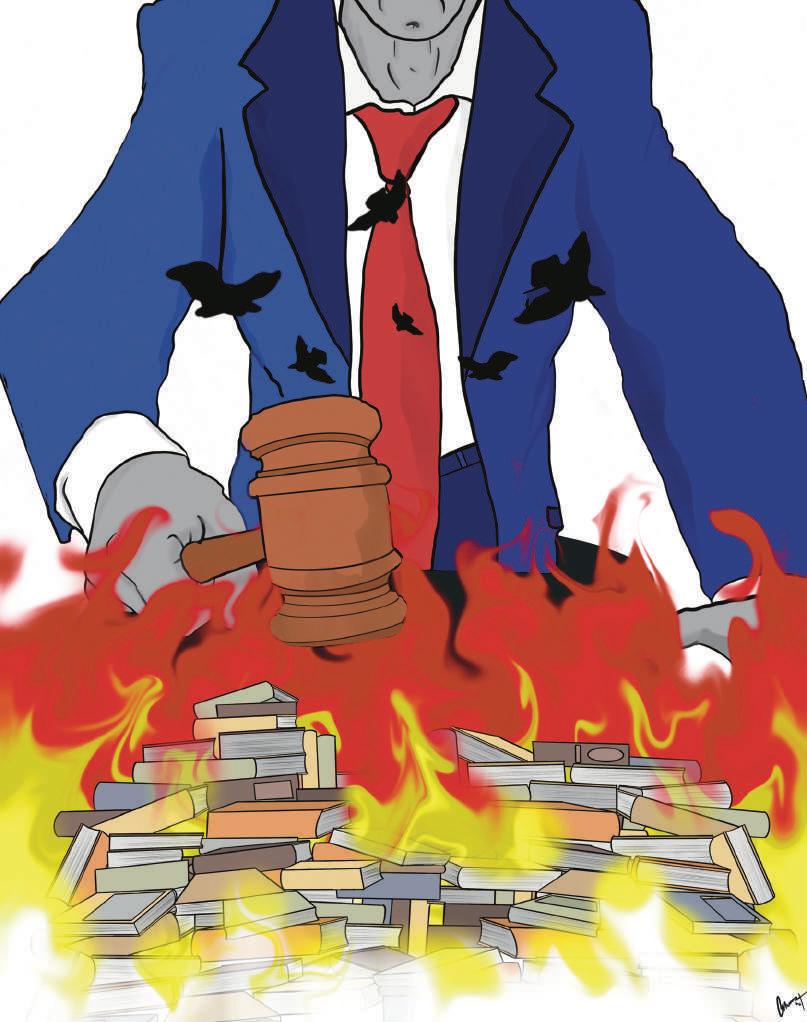
It’s been a bad year for curious book-loving kids who are stuck growing up in these places. If you want to stick your nose into Harry Potter all weekend, like millions of other kids everywhere in the world, good luck if you live in Mount Joliet, Tenn.
It’s the home turf of reactionary reverend Greg Locke, pastor of the Global Vision Bible Church, and his flock might just end up barbecuing you.
“We will be having a massive BURNING at the end of our Wednesday night message this week,” Locke wrote in an Instagram post promoting his book roast on Feb. 2, 2022.
“Stop allowing demonic influences into your home,” he wrote. “Bring all your Harry Potter stuff. I don’t care. IT’S WITCHCRAFT 100%.”
A few dozen or so of his sheep turned out in a scene that would make Goebbels and the Puritans proud.
Call it hypocrisy or irony, but there is something perverse about a pseudo-minister like Locke telling lies under the protection of the First Amendment and the guise of freedom of religion, as he undermines the rights of millions.
PEN America, (originally Poets, Editors and Novelists) is the leading organization of writers defending the right to write and read.
In April, PEN released a chilling report. “The Index of School Book Bans.” From July 1, 2021, through March 31, 2022, the Index listed 1,586 instances of banned books that affect 1,145 book titles. This encompasses different types of bans, including removals of books from school libraries and classrooms, and books banned during investigations. Bans come from parents, educators, administrators or board members, or in response to laws passed by legislatures.
The PEN Index report lists bans that affected 874 authors, 198 illustrators, and nine translators, impacting the literary, scholarly, and creative work of 1,081 people.
The Index also documented book bans in 86 school districts in 26 states. These districts represent 2,899 schools with a combined enrollment of over 2 million students. In the land of the free, that’s not a lot of freedom. Texas is banning heaven, with 713 bans in 16 districts.
Besides the rage against Harry Potter, the books most often attacked included themes of racial justice and history—especially when written by men of color, LGBTQ, anti-war tracts, human sexuality, or criticism of any institution such as law enforcement.
So, fundamentalists do it. MAGA types do it, and the FBI and feminists do it—just ask Robert Williams, a famous Los Angeles City College visual artist. Censorship, which comes in many forms, is employed to suppress the power of an idea to enlighten, question or even challenge the contradictions between our expressed ideas and our behavior. Censors have been busy little beavers damning things up since before the first Thanksgiving.
Ironically, parents, school boards and politically motivated religious leaders exercise their freedom of speech to advocate for the banning of books aimed at young readers. They decry content about human sexuality, rebellion, mental health, violence and language. This is usually a fig leaf to attack the topic that most raises the hackles of our fellow citizens. Censors almost always center on books that challenge American norms on race relations. It was true during slavery, true during Jim Crow and true now in the current era of Black Lives Mattering. Herein lies the reality that all would-be censors share. It is in the misguided belief that they can recognize “evil”, and that other people must be protected from it. In truth, our freedom and our rights will be burned at the stake by cracker preachers and the Texas school boards of this country.
Ernest Hemingway famously pronounced “The Adventures of Huckleberry Finn” as “the great American novel from which all others come.”
Yet, since it was first published in 1885, the novel has been a consistent target of censors for its treatment of America’s original sin: slavery. Huck and Jim’s friendship was an affront to the racist society of the 19th century, in both the North and South, and Twain was deliberately pushing people’s buttons by portraying their friendship.
Twain reacted to the Concord censors tartly: “Censorship is telling a man he can’t have a steak just because a baby can’t chew it.”
While the “n” word appears more than 200 times in the book that was never a reason for the establishment to ban it. African American parents challenged the classic for racial slurs in beautiful downtown Burbank in 2020.
Nadra Ostrom, an African American parent who filed a complaint against the Burbank School District, told Newsweek Magazine that the portrayal of Black people is mostly from a white perspective.
“There’s no counter-narrative to this Black person dealing with racism and a white person saving them,” Ostrom said.
However, the President of the National Council of Teachers of English, Jocelyn A. Chadwick, an internationally recognized Twain scholar, and an African American woman defended Twain on the PBS program “American Experience.”
“The most recent and most sustained argument against Mark Twain is, how can a white man write about racism? He has no right to write about something that did not affect him,” she wrote. “To me, that argument is specious. If you’re telling Twain that white men or women cannot write about people of color, are you saying that Black writers should not write about white characters? You can’t shut one door without shutting the other.”
Other American authors who have explored racism have met with similar backlash.
“To Kill a Mockingbird,” by Harper Lee won a Pulitzer Prize in 1966 but faced scrutiny for themes of rape. The Hanover County School Board threatened to remove the book until Lee and other readers began to write letters critical of the school board to the Richmond News-Leader.
“Recently, I have received echoes down this way of the Hanover County School Board’s activities, and what I’ve heard makes me wonder if any of its members can read,” Lee wrote in a letter to the editor.
What do James Baldwin, Zora Neale Hurston, Alice Walker, Ralph Ellison and Richard Wright all have in common? They are all African American writers who have published novels that are American classics.
They are also authors who have been banned by school boards and libraries across the United States. Again, they tackled themes of human freedom, human dignity, and human expression
AS A LIBRARIAN, I DO NOT SUPPORT THE BANNING OF BOOKS OR OTHER INFORMATION. I BELIEVE THAT INFORMATION IS MEANT TO BE FREE AND IT IS OUR RESPONSIBILITY AS HUMANS, TO BE CRITICAL THINKERS WHEN IT COMES TO SELECTING AND DIGESTING INFORMATION. YOU GET TO BE THE ONE WHO CHOOSES WHAT INFORMATION YOU CONSUME, NOT SOMEONE ELSE.
ALL LIBRARIANS SAW IT COMING. … INFORMATION HAS ALWAYS BEEN CHALLENGED. IT HAS ALWAYS BEEN THIS UPROAR. IT’S CULTURAL. IT’S ALWAYS BEEN THAT WAY, AND ESPECIALLY IN THE U.S. IT’S ALWAYS BEEN CONTESTED ABOUT WHAT BOOKS SHOULD BE READ AND NOT. THINK ABOUT THE “RED SCARE.” YOU KNOW, INFORMATION LIKE THAT HAS ALWAYS BEEN CONTESTED. THERE IS ALWAYS SOMEONE WHO IS GOING TO LOOK AT IT AND SAY THAT’S NOT APPROPRIATE FOR KIDS.
20 21 Collegian Times SPRING 2022 SPRING 2022 Collegian Times
REPORTER’S NOTEBOOK
ILLUSTRATION BY CASSANDRA MUNOZ
Collette Salvatierra Martin Luther King Jr., Librarian
Sarah Bosler Public Services Librarian @ Hayden Memorial Library Citrus College, Glendora, Calif.
through each author’s lens on race. Possibly the author most censored in the U.S. is the late Maya Angelou, for her classic autobiographical novel, “I Know Why the Caged Bird Sings.”
Despite honors for Angelou’s work, the book banners have been relentless. Orange County School Board Trustee John Briscoe advocated to have Angelou’s book removed from the curriculum.
“It contains child molestation scenes, lesbian scenes, teen sex scenes and teen pregnancy scenes, and these are not matters for children in middle school or any elementary school,” Briscoe complained at a city council meeting.
In a 2013 interview, the late author rejected the attempts to silence her. “Let me tell so much truth, I want to tell the truth in my work,” Angelou tweeted on Sept. 25, 2013. “The truth will lead me to all.”
With book banners running amok and school librarians under siege, the New York Public Library (NYPL) recently initiated a campaign called “Books for All”, to make some banned books available for free to any reader, 13 and older. Normally, only New Yorkers may check out books from the NYPL. The President of the New York Public Library, Tony Marx says contemporary banned books revolve around specific subjects and themes.
“The recent instances of both attempted and successful book banning —primarily on titles that explore race, LGBTQ+ issues, religion, and history — are extremely disturbing and amount to an all-out attack on the very foundation of our democracy,” Marx said. ∫
The American Library Association Office for Intellectual Freedom tracked 729 challenges to library, school, and university materials and services last year. The books listed are at the top of the 1,597 most targeted books with notes on the nature of the challenge.
1. “Gender Queer” by Maia Kobabe Reasons: Banned, challenged, and restricted for LGBTQIA+ content, and because it was considered to have sexually explicit images.
2. “Lawn Boy” by Jonathan Evison Reasons: Banned and challenged for LGBTQIA+ content, and because it was viewed as sexually explicit.
3. “All Boys Aren’t Blue” by George M. Johnson Reasons: Banned and challenged for LGBTQIA+ content, profanity, and because it was viewed as sexually explicit.
BANNING BOOKS THREATENS FREE SPEECH. AUTHORS AND ARTISTS HAVE THE RIGHT TO EXPRESS THEIR OPINIONS WITHOUT INTERFERENCE, CENSORSHIP OR PUNISHMENT BY THE GOVERNMENT. THEY HAVE THE RIGHT TO TELL STORIES THAT REFLECT THEIR POTENTIAL READERS, THAT RESONATE WITH US ALL DIFFERENTLY. IT’S OUR CHOICE TO CONSUME THE INFORMATION OR STORIES.
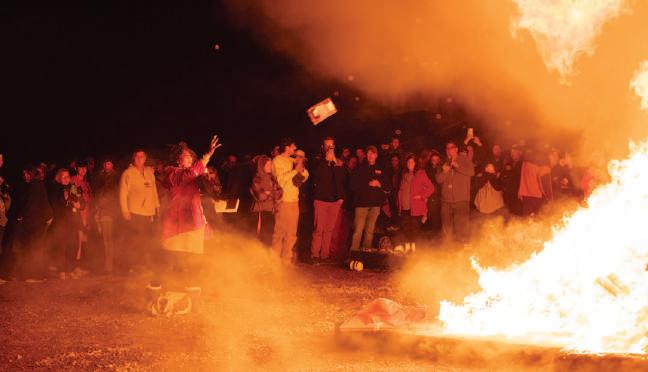
4. “Out of Darkness” by Ashley Hope Perez Reasons: Banned, challenged, and restricted for depictions of abuse and because it was viewed as sexually explicit.
5. “The Hate U Give” by Angie Thomas Reasons: Banned and challenged for profanity, violence, and because it was thought to promote an anti-police message and indoctrination of a social agenda.
6. “The Absolutely True Diary of a PartTime Indian” by Sherman Alexie Reasons: Banned and challenged for profanity, sexual references and use of a derogatory term.
7. “Me and Earl and the Dying Girl” by Jesse Andrews Reasons: Banned and challenged because it was considered sexually explicit and degrading to women.
8. “The Bluest Eye” by Toni Morrison Reasons: Banned and challenged because it depicts child sexual abuse and was considered sexually explicit.
Sarah Bosler Public Services Librarian @ Hayden Memorial Library Citrus College, Glendora, Calif.
Cats and Dogs Deserve Basic Rights
BY KATHARINE FORD
It is about time people think of cats and dogs as “sentient beings that experience complex feelings that are common among living animals while being unique to each individual animal.”
Opposition is mounting in California against Assembly Bill 1881, which would establish a “Dog and Cat Bill of Rights.” It is authored by Assemblyman Miguel Santiago (D-Los Angeles).


9. “This Book is Gay” by Juno Dawson Reasons: Banned, challenged, relocated, and restricted for providing sexual education and LGBTQIA+ content.
10. “Beyond Magenta” by Susan Kuklin Reasons: Banned and challenged for LGBTQIA+ content and because it was viewed as sexually explicit.
Most animal lovers inherently agree that animals have the rights stipulated in the initially proposed bill of rights, including the right to a “life of comfort, free of fear and anxiety” and to be spayed and neutered.

However, many people seem to lack the compassion and common sense that cats and dogs have rights that are just as important as those that people enjoy. This lack of compassion and common sense indicates that potential adopters need to be advised, understand, and agree to these rights.
As indicated by Alexa Mae Asperin in a Fox11 article on April 27, 2022, “the bill continues to move forward.” However, the current assembly bill reveals that the wording has already changed from the “rights” cats and dogs should have to the word “deserve.”
Of course, cats and dogs “deserve” to be “free from exploitation, cruelty, neglect, and abuse” and “nutritious food, sanitary water, and shelter in an appropriate and safe environment.” But, does the bill go far enough to indicate what cats and dogs “deserve” instead of the fundamental rights they should have to ensure their safety and wellbeing?
It is appalling that there are people who do not provide basic care for their pets. As long as people do not understand or do not care that animals have feelings just like humans, including joy, fear, anxiety and sadness, a dog and cat bill of rights is necessary.
With rampant abuse and neglect of cats and dogs, we require a bill stipulating “rights” instead of simply deserving basic care and comfort. ∂
22 23 Collegian Times SPRING 2022 SPRING 2022 Collegian Times
PHOTO BY BEATRICE ALCALA
PHOTO BY JOAN MAO
PHOTO COURTESY UNSPLASH
PHOTO COURTESY TYLER SALINA, @SALINAS. TYLER
‘VIDEO DIARIES’ Return to Justice for My Sister
BY JOAN MAO
Emerging filmmakers and producers of color regain their footing after two years of COVID.
The pandemic brought a two-year hiatus and delayed the certification training program that is the mission of Justice for My Sister (JFMS). The nonprofit trains women of color, nonbinary and foster youth to make special films.

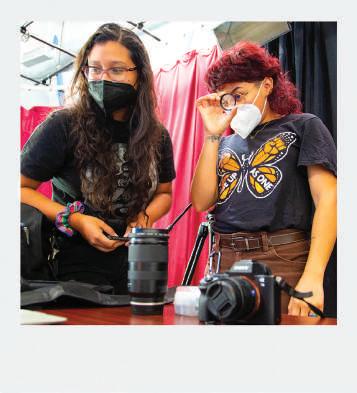


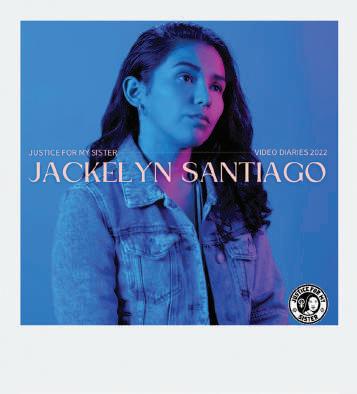
Themes are gender inclusive and speak to racial justice as a way to heal from trauma. The organization staff supports the efforts of women, as they work to overcome financial barriers in the T.V. and film industry. Mercedes Mijares is one of them. She grew up near MacArthur Park, and in her youth discovered the power of writing and producing plays.
Mijares faced trauma as a child, and she did not receive help. She says drugs became her friend. She discovered a different world with the help of Heart of Los Angeles (H.O.L.A.). The organization gives underserved kids a chance to succeed through activities and after-school programs.
“I was in love with the process of creating,” Mijares said. “It kept me off the streets most of the time. I was able to explore through my writing new worlds and new ideas. I really enjoyed it.”
JFMS has provided referrals to over 200 women, girls and gender-non-confirming individuals to service providers in Los Angeles and Ventura counties. Women like Mijares found a new life with JFMS.


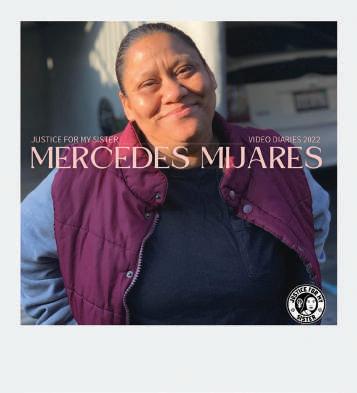
“I have been coming a long way in telling my story of redemption from being born into poverty, sexual, mental and physical abuse,” Mijares said. “I overcame despite all the odds against me and my self-sabotage. I was able to reconnect to my roots and get closer to prayer and the healing process. I’m reconnecting with my writing and storytelling.”
After a two-year hiatus during COVID, JFMS relaunched its “Video Diaries” program for emerging filmmakers of color.
Columbian American award-winning documentarian Kimberly Bautista founded the non-profit organization in 2011. JFMS started the video diaries in 2017 as a partnership with PBS SoCal and their To Foster Change Initiative.

In her article “The Story of Justice For My Sister: Combatting Gender-Based Violence
Across Borders,” published on mujerestalk.org, Bautista writes about the documentary and why “healing through community” is important.
“Many of the stories in our web series are of survivors that had seen Rebeca’s story in the feature documentary and decided they also wanted to share their stories,” Bautista wrote. … We want to offer survivors a platform to share their stories, casting aside blame and shame, as the historically typical narrative would have it, and in turn, break the silence and disrupting the hegemonic, heteronormative, white supremacist, imperialist, victim-blaming narrative.”
The Lens Liberates
This year, California Arts Council and JFMS selected six participants for the 2022 Video Diaries program. In the past, only former foster youth could participate. This year, JFMS looked at other underrepresented communities, like former incarcerated or undocumented women from Los Angeles and from Lima, Peru.
Daniel Bisuano acts, writes and advocates. He cares about social justice and formerly incarcerated youth. Erica Brown specializes in radio and TV broadcast. She is a graduate of the Illinois Media School. Ximena Medina Vasquez is a photographer an audio visual communicator and a filmmaker. She recently debuted in the video performance documentary “Healing Ritual for a Papaya.” X Rios is a “multimedium” artist who tells stories that bring awareness to problems that confront the juvenile justice and the foster care systems. Jackelyn Santiago is a media artist who explores her South American roots. Through the power of art, she brings hidden issues to the fore. She uses drawing, photography, film and graphic design to tell her story.
The 8-week educational workshop series provides one-on-one mentorship and documentary filmmaking training for participants to develop and produce their own five-minute video story.
They meet every Saturday for a three-hour session to discuss topics that range from development to production and editing. Throughout the week, the participants meet with their mentors.
This year’s mentors include Pea Nuñez, Patricia Ovando, Ronnie Clark, and Sannii CrespinaFlores.
Gabrielle Jackson, JFMS’ programs manager says the participants use filmmaking to regain their sense of freedom.
“The lens helps liberate them as they document their journey and show the world their reality,” Jackson said. ∂
24 25 Collegian Times SPRING 2022 SPRING 2022 Collegian Times
Gabrielle Jackson is a programs manager for Justice for My Sister. She discusses script development with producers during weekly “Video Diaries” meetings on Saturdays.
“I wrote three produced plays. was in love with the process of creating.”
Mercedes Mijares, “Video Diaries.”
Patricia Ovando delivers a lesson on storyboarding. She shows participants the storyboards created by Mercedes Mijares.
"Video Diaries" participant Jackelyn Santiago peers through a camera lens. Pea Nunéz (left) instructs participants on the use of the camera body and lenses.
“I was able to reconnect to my roots and get closer to prayer and the healing process. I’m reconnecting with my storytelling.”
L.A. STREETS HOST PEOPLE’S ART
BY MICHAEL SITAR
ARTIST’S STATEMENT:
Ilived in Long Island for 22 years, so Los Angeles was a jolt. Culture shock. The climate was one thing. The variety of cultures–different from New York City–was something else. I instantly fell in love with L.A. street art.
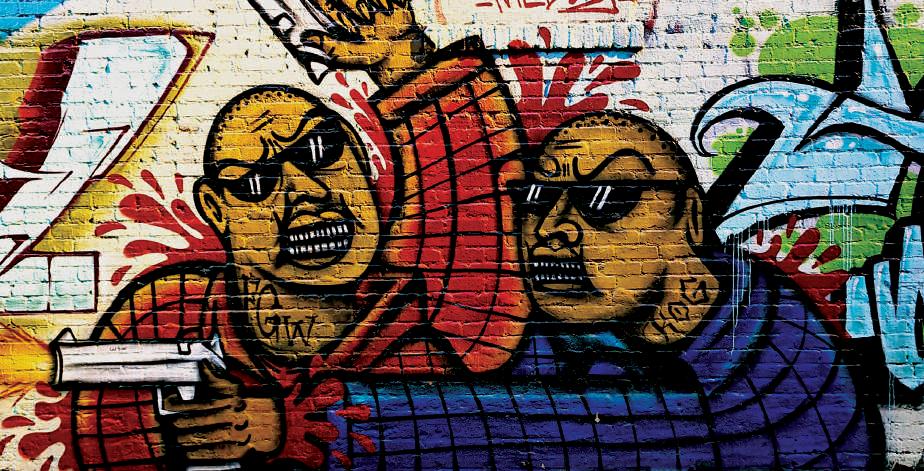
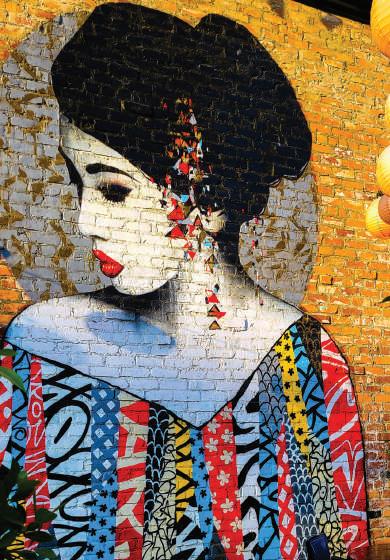

Long Island street life does not provide the human connection art evokes on an outside wall in Los Angeles. Anonymous memorials, social commentary and childlike nostalgia make walking in downtown L.A. feel like an open-air museum. ∫

Image 1:
“We’re Gonna Get Ya!”
This lively trio jumped out and caused me to smile. All at once, they look ferocious and cute. A miniature crown adorns the first, and a halo illuminates the third. Are they friend or foe?
Image 2:
“Iconic blue”
Before moving here, the blue and white Dodgers hat was always something associated with this town. I see now that in many ways this is a symbol of pride for Angelenos–the iconic “L.A. Blue” with the “L” crossing the “A.”
Image 3:
“Penny for Your Thoughts”
Some of L.A.’s art towers over me as dine. Her stoic look is reinforced by the vibrancy of her costume. Her face, deceptive, tells some she is sad, others she is angry. think she is planning, contemplating, anticipating.
Image 4:
“Craving Sugar”
crave candy when I see this guy trotting past me. Swaths of bold, muted color mirror the Original Lifesavers candy wrappers of my youth. Mr. Zebra’s stripes make me want to blow bubbles.
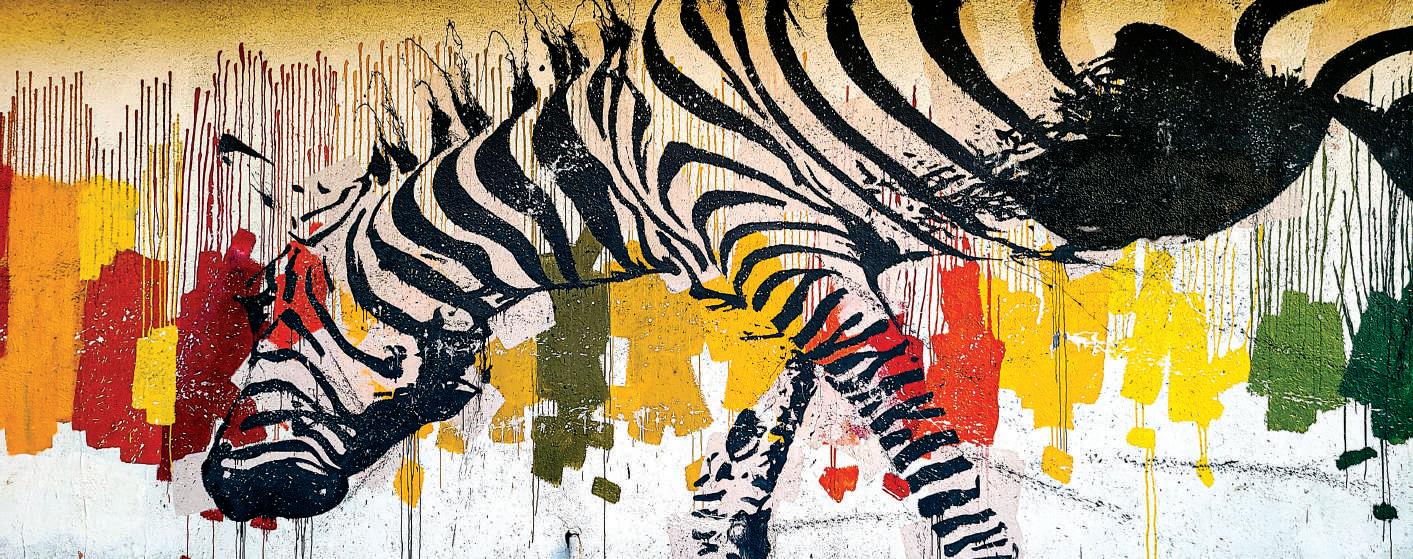
Image :5
“Bang, Bang. He Shot Me Down.”
Not all mischief is good, and not all art is happy. There is sadness and drama that radiates from this duo. It’s dark and all too real. It tells a story while raising questions. What did they fight over? Was it worth it? Did anyone walk away?
Image 6:
“Kirby”
One of the first images that called out to me when moved here was “Kirby,” flying through a futuristic background. The ball of pink is cute but deadly. It filled me with nostalgia and offered a warm welcome to match the climate.
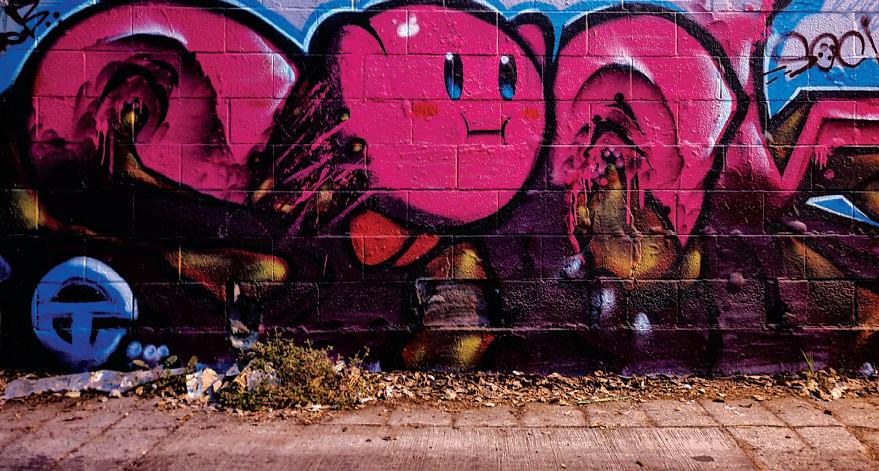
Image 7:
“Passing the Bomb”
A red bomb centered between the eyeless spies grounds the otherwise busy mural. Not everything needs to be colorful to create drama. Mural is based on "Spy vs. Spy," from "Mad Magazine." A color splash can make all the difference.
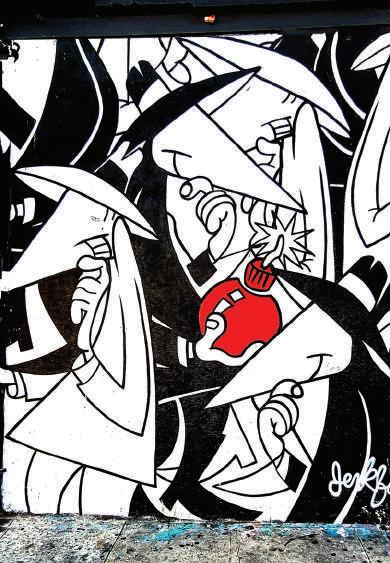
26 27 Collegian Times SPRING 2022 SPRING 2022 Collegian Times
1 3 4 2 5 6 7
sprinted toward Marie’s house. Close behind— Rosa tried to shield him. She placed herself between the shooters and her husband. One of them grabbed Rosa by the arm and shoved her aside.
Jaime scrambled toward Marie’s front door. He never made it. The three gang members shot him 15 times in the back, and he died in front of his family as his wife and daughter screamed hysterically.
The violence continued. One of the shooters grabbed Rosa’s hair and pressed the gun to her temple.
American Justice Inspires Hope, Fear
Six years later, the contrast between the day Jaime was murdered and Marie’s deportation hearing in a California courtroom is stark. Marie has not slept in days worrying about her fourth and final asylum hearing. She sits alone in a new nondescript immigration courtroom, in a new nondescript office park, hard by the 55 Freeway in Santa Ana, Calif.
A million “what if’s” consume her thoughts: “What if it’s a Trump-appointed judge?” The last one was. Out of the blue, he ordered her to post a $15,000 bond.
The same judge ordered her 18-year-old nephew to post a $50,000 bond in a different case.
GOING BACK' EL SALVADOR:
BY JOHN A. JOHNS PHOTOS BY JOHN A. JOHNS ILLUSTRATION BY JONATHAN VALDOVINOS
No one in Marie’s family was safe from El Salvador’s gangs, not her daughter Rosa, nor her son-in-law Jaime. They lived with Rosa’s two teenagers from a previous marriage across the courtyard from Marie.
Jaime was an animal husbandry man and a candy seller.
In 2015, neither woman knew the MS-13 gang was extorting money from him. The gang demanded “loans” and never paid them back, including one for $2,000 in July of 2016.
Jaime never thought the gang would carry out its threats, and he could not pay the money.
After work on July 27, Jaime, Rosa and her teenage daughter Susana headed out to shop for hens. They were being watched. Three MS-13 members waited to ambush the family in front of the house. Jaime perceived danger, and he

“Thank you for telling the truth, Ms. Garcia,” Judge Lee says.
Marie’s mind wanders to San Miguel in El Salvador, to a lifetime of struggle, and nearly 40 years of pure hell.
Life Brings Escape, Abandonment, Hope Marie grew up in rural poverty working in the fields with her parents from the time she was seven years old. She had eight siblings. She loved school, but her father could only afford to send her through ninth grade.
During the El Salvadoran Civil War, her family lived in an area controlled by the guerrillas. One day, as she fetched water from a natural spring, a Salvadoran army battalion arrived. A sergeant took an interest in Marie. He suggested they live together, and Marie agreed. She was 14.
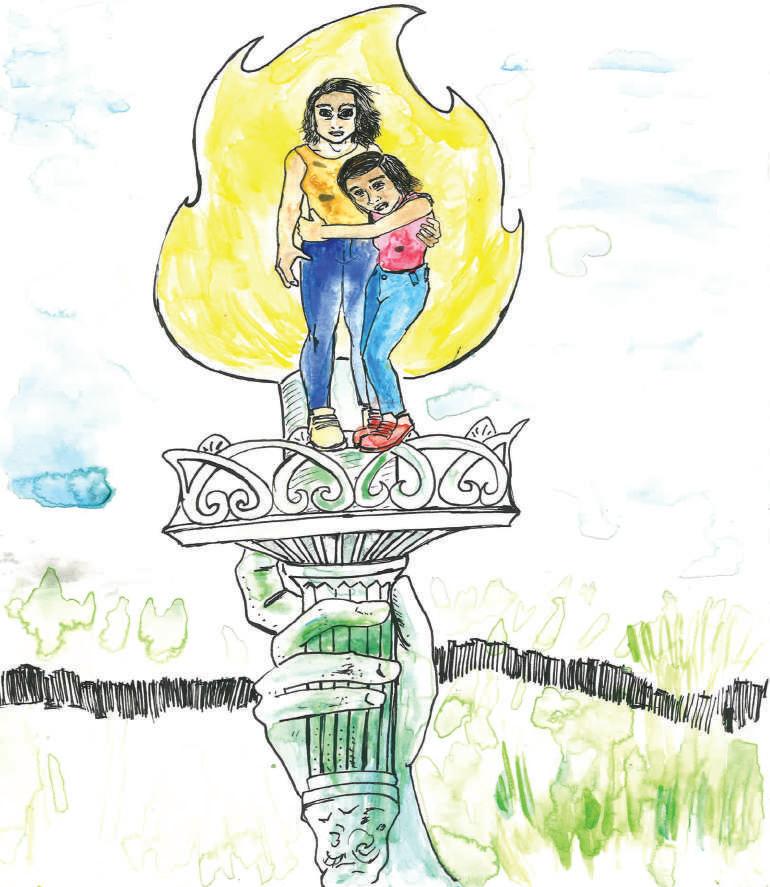
Marriage promised a major improvement: escape from constant hunger and the war zone. Their 10-year marriage produced four children. After the birth of their last child in 1989, her husband began to drink, and he left her destitute. Then opportunity: a minister gave her $25, and she took a calculated risk with a business idea. She sold carne asada on a shish kabob to bus travelers in San Miguel. It became an instant success. Over time, she hired nine workers. Gang members from MS-13 took notice.
She wondered how to prove police and gangs in El Salvador work together or that gang members there want to kill her. Deportation would mean certain death for 52-year-old Marie, a woman with 16 grandchildren.
Only Marie, the judge, and an interpreter are inside the courtroom. The silhouettes of Marie’s new attorney, and the government’s attorney are streamed in on a jumbo flat screen. They look like characters from a dystopian novel.
Two minutes into the hearing, the Department of Justice lawyer levels a serious charge against Marie.
“Your honor, the government has found that Ms. Garcia has a prior conviction in El Salvador for drug possession and trafficking,” says attorney Ms. Lee.
Marie’s mind goes blank. Panic. Silence. More panic.
Judge Wilber Lee speaks softly to Marie.
“Can you please tell the court about this conviction,” he said. “Were you ever convicted of this offense?”
Marie responds slowly.
“Your honor,” she says as her voice trails off. “Your honor, I transported drugs in my hometown. I was caught. I was convicted, and I spent five years in jail. I paid for my crime. I was promised that my record would be expunged.”
The judge asks for proof, and Marie offers to produce a letter.
In 2001, MS-13 “requested” that vendors like Marie operating near the bus terminal attend a mandatory meeting.
Pay $200, Still Go to Jail
Gang members don white, black or blue brand-named hats (red was prohibited), black and white Nike Cortez shoes, and loose-fitting clothing with the pants tied in an “M” at the waist. Local MS-13 members stand on a rock and look down at the vendors to intimidate them.
“For you to get the protection each of you needs, you have to start paying us $100 every two weeks, and we need the money now,” the leader said.
“Rent” translates to extortion in gang parlance, and Marie’s “rent” increased little by little. MS-13 eventually put the squeeze on her for $200 every two weeks.

By 2016, she borrowed money to make “rent.” Marie lived in a constant state of anxiety while gang members murdered fellow vendors. The fear was real. A Coca-Cola delivery man would call the police every time he saw MS-13 members hanging out in public. He carried a gun to make deliveries, but gang members ambushed him at 5 a.m. one morning. A half-hour later, Marie arrived at work and saw him slumped over the steering wheel of his car, covered in blood. Dead.
“It’s like a circle,” she says. “The police are involved in the whole thing. Because the police will let the gang members know if someone has
reported on them, and then the person who called the police will get killed.”
The extortion of working people was not enough. The gang’s business model included the forced transport of contraband and capital. They made Marie carry cash and drugs to stay alive. And she got caught. She served five years. What unfolded next strains the imagination.
The man who owned the drugs was known as “Homeboy,” and he was arrested, too. While they were in jail, he demanded that Marie admit the drugs were hers alone. He went free.
She survived five years in prison, but it was brutal. She says a lesbian inmate demanded sex and assaulted her. On the outside, her daughters, Rosa and Tia were raped. They were eight and nine years old, respectively.
After her release from prison, Marie resumed her business. The gang reappeared to extort payments and threaten her life.
“I looked in Rosa’s eyes and it was horrible,” she says. “There was nothing there.”
At that moment, Marie was not afraid of gangs.
Gang Members Begin as Neighborhood Kids
Marie witnessed MS-13’s rise to power from the start. In San Miguel, the gang began as “the
Crazy Detour,” and later “Direct Salvatrucho,” which is slang for Salvadorans, and finally, the Mara Salvatrucha or MS-13.
“I knew many of them when they were children,” she says. “At that time, no one thought they would grow up to be so powerful. They were just kids throwing stones at each other.”
A gang member deported from California, nicknamed El Chacal (the jackal) organized the group. The kids began to steal hats with brand-name logos like Nike and sell them. Their enterprise expanded. Next, they began to beg the bus fare collectors for colones (coin worth roughly 20 cents). Usually, they would say that they were hungry. As they grew stronger financially, they became brazen and violent, delving into the illicit drug trade.
By 1993, the California prison system deported over 4,000 gang members back to El Salvador. A year earlier, the U.N. mediated the signing of the El Salvadoran Peace Accords, and thousands of enemy combatants were released from combat duty. They lacked jobs or any means of support, so many ex-soldiers and gang members joined forces, according to Oscar Martinez in his 2014 book, “The Beast: Riding the Rails and Dodging Narcos on the Migrant Trail,” and “American
28 29 Collegian Times SPRING 2022 SPRING 2022 Collegian Times
'NEVER
SCAN HERE TO WATCH THE VIDEO
History Review.”
They became a threat to all Salvadorans, except the very wealthy. Women like Marie made an ideal target.
She remembers how the gang murdered Jaime and put a gun to Rosa’s head.
Never Going Back
“Miraculously” the gun was out of bullets, “only” scarring Rosa’s temple with the redhot barrel. Marie knew Jaime’s killers but felt powerless.
“I felt impotent, I wanted to be made of iron to protect the people I love,” she says. “If I had a gun, it would have been worse, they would have killed all of us.”
The memory of Rosa, moments after Jaime’s murder, haunts her mother, as does the gang’s reason for killing him.
“He was a good man,” she says. “He didn’t do drugs or alcohol; he wasn’t in a gang.”
If there were any doubts about police collusion with MS-13, the “murder investigation” and funeral dispelled them.

Police showed up nine hours after Marie called 911. The gang told Marie and her family not to attend Jaime’s funeral—payback for calling the police.
Three thousand miles away, she sits outside the tiny structure she rents in San Bernardino County, and she is emphatic.
“I love my country, but there is no way that I am ever going back to El Salvador. I cannot live there.” ∫
ILLUSTRATION BY BEATRICE ALCALA
LOS ANGELES MAYOR’S OFFICE OF IMMIGRANT AFFAIRS RESOURCES
Asian Americans Advancing Justice – LA*
1145 Wilshire Blvd., Los Angeles, CA 90017
Phone: (213) 977-7500
http://advancingjustice-la.org/
Languages: English, Cambodian (Khmer), Chinese (Mandarin and Cantonese), Filipino (Tagalog), Korean, Thai, Vietnamese, and other Services: Initial Consultation, Family Based Petitions, Citizenship
Immigration Center for Women and Children (ICWC)

634 S. Spring St., Suite 727, Los Angeles, CA 90014
Phone: (213) 614-1165
http://icwclaw.org/
Languages: English and Spanish
Services: Initial Consultation, U-Visa, VAWA, Special Immigrant Juvenile Status (SIJS), DACA, T-Visa
Bet Tzedek*
3250 Wilshire Blvd., #1300, Los Angeles, CA 90010
Phone: (323) 939-0506
http://www.bettzedek.org/
Languages: English, Spanish, and other translation support available via third party language services
Services: Elder Law and Dependent-Adult Services, Special Immigrant Juvenile Status (SIJS), Holocaust Survivor Services, Employment Rights, Kinship Care, Housing/Homelessness Prevention, Government Benefits, Transgender Rights, Small Claims, Small Business Development
Immigrant Defenders Law Center (ImmDef)* 634 S. Spring St.,10th Floor, Los Angeles, CA 90014
Phone: (213) 634-0999
https://www.immdef.org
Languages: English and Spanish
Services: Unaccompanied Minors (UAC), Asylum, Removal Hearings, Special Immigrant Juvenile Status (SIJS), T-Visa, U-Visa, Legal Representation
For an extensive list of resources, check https://collegianwired.tumblr.com

30 31 Collegian Times SPRING 2022 SPRING 2022 Collegian Times
SOURCE: PEW RESEARCH CENTER
THE WALL PHOTO
The U.S. Customs and Border Protection provided oversight for wall construction during the Trump administration. A new "border wall system” through Arizona and New Mexico stretches 576 miles and costs an estimated $11 billion. NPR reports it is the most expensive wall of its type anywhere in the world at an estimated $20 million per mile.
THE GRAVE
Personal items mark the death site in Ajo, Ariz., of an immigrant baby who is buried elsewhere. Since 1998, at least 7,805 people have died as they attempted to cross the Sonoran Desert into the United States. More than 3,500 have been reported missing to the Colibri Center for Human Rights in Tucson, Ariz.
“I am pretty sure his nervousness came from his childhood, his mother abandoned him and his father and mother-in-law mistreated him,” my dad said about my grandfather.
Hijackers Make Demands
My grandfather was a simple family man. He was a husband and a father to eight children. He did everything he could to live a traditional American life, including hard work in an Italian restaurant in Beverly Hills. However, his life like that of many others was affected and shaped by the social movements of 1950s and 1970s.
Martin Luther King led the Civil Rights movement until his assassination in 1968. Cesar Chavez, along with Dolores Huerta led the Delano Grape Strike. Protests and social movements were not the only events that shook people’s cultural and social foundations.
The late 1960s and early 1970s saw the “golden age” of airplane hijackings. Brendan I. Koerner, author of “The Skies Belong to Us: Love and Terror in the Golden Age of Hijacking,” chronicles the history of those who had enough courage to command a jet and place demands.
MY GRANDFATHER GOES ACTIVIST, Voices Chicano Concerns
At the time of frequent airplane hijackings, one man used an empty pistol to divert a plane and give a half-hour speech on racism to Latino media outlets.
 BY CHRISTIAN CHAVEZ
BY CHRISTIAN CHAVEZ
ll my grandfather ever talked about was Jesus, but 50 years ago, he hijacked an airplane with nothing but a .22 caliber pistol. This is the story of Richard Chavez Ortiz, a father of eight children who moved to the United States hoping to achieve the American dream.
Ortiz worked since he was a kid in the municipality of Tingüindín, Michoacan where he was born on Sept. 19, 1933. People depended on avocado, maize and wheat harvest in the area,
Awhich was smaller than 300 square miles. Tired of the work in the maize fields, Ortiz crossed the border into the United States and found a job as a dishwasher. It was 1949. He was 16.
Celia Mendez, two years his junior, was waiting for him in Mexico so after only one year, Ortiz quit his American job and went back to his home country. They married the same year and then moved to the United States together. In 1955, they had twin boys. When they were six months old, one of the twins got sick and died. The other grew up to become my father: Richard Chavez.
“He used to be very cold with us,” my dad said of my grandfather. “He wasn’t very friendly, like father and son, we never had a good relationship with him.”
My dad says my grandfather was always in a bad mood. The family never had the confidence to talk to him.
I interviewed Koerner in April and asked him about the airplane my grandfather hijacked, and what was happening during that decade in America and Mexico.
“I really tried to focus on 1972, which was the last year of this epidemic of hijackings in America,” Koerner said. “People would ask for one of two things. They would ask for transportation to a place where they would become fugitives, mostly Cuba, but there were other places. Or they would ask for something of material worth, specifically money. The one regarding Ricardo Chavez Ortiz was particularly compelling.”
“I am Trying to Save America”
In a time of tumult, good-paying jobs were scarce. My grandfather grew more annoyed and more exhausted with every day. He was fired from his position as a chef, and his family lost the only income they had.
As a last resort, my grandfather left his family and went to Albuquerque, New Mexico to search for work.
He was desperate. So desperate, that 36 hours later, on April 13, 1972, my grandfather spent all the money he had on a .22 caliber pistol and a plane ticket. His plan was to take the bus, return to Mexico and sell the gun. The money would have helped him start anew as a police officer in Tijuana. He was hoping to reunite with his family soon.
But sometimes, things just don’t go as planned.
My grandfather successfully passed the airline security with his unloaded gun in his pocket, a feat that was ridiculously easy to achieve back then.
“There was no security in the airports, there were no metal detectors and no bag checks” Koerner said. “The only security they had was ticket agents were trained to recognize certain behavioral cues that were supposed to be indicative of a potential hijacker and if you fit that profile, they could search your possessions.”
Frontier Airlines Flight 91 took off. As the plane reached its cruising altitude, my grandfather, who was sitting quietly, had a change of heart. In a spur of the moment, he altered the course of his life and the lives of everyone he loved.
When the stewardess approached him, my grandfather took out the gun and placed it in his lap. He then turned to her and demanded to speak with the pilot.
Flight 91 Changes Course
My grandfather entered the cockpit and instructed the pilot to divert the plane from Phoenix to Los Angeles. He assured the pilots that no harm would come to the passengers and that he wanted no ransom. He agreed to release the passengers, but requested that Spanish Language media be brought to hear his statement regarding the mistreatment Latinos faced in America.
“I don’t want to hurt no one, please,” my grandfather told the pilot in broken English. “This is for save my sons and your sons, too. I am trying to save America, to save the whole world, because we are all crazy.”
As the Boeing 747 arrived at Los Angeles International Airport, so too would journalists and the police. Journalists present in the cockpit reported on Ortiz’s rambling 34-minute speech. His speech covered police brutality, racism and education policy. Federal Bureau of Investigation (FBI) later confiscated the tapes, making any records of the speech difficult to find.
“They asked me where my dad was,” Richard said. “I told them that he woke up and went to Tijuana, Mexico, for pleasure.”
To my father’s surprise, that was not true.
“They said ‘nope’. The person they were asking about was at LAX hijacking an airplane,” my shocked father said. “I said ‘no that’s impossible,’ there had to have been a mistake. They told me that it was not a mistake and that my mother was already heading to LAX with another agent.”
My grandfather was sent to prison for air piracy. However, the Chicano community responded with an approving roar. His actions inspired many to pledge their houses as collateral. They raised the $35,000 bail. Thirty-five thousand adjusted for 50-yearinflation today is $240,000.
Chavez Ortiz still had a hurdle to face. While he may have made bail, he still had to face federal court.
According to Los Angeles Times reporter Frank Del Olmo who covered the entire trial, Ortiz echoed the remarks he made during the 34-minute broadcast. He argued that the state of the world is in distress and needs to be saved, and that he was the one to do it.
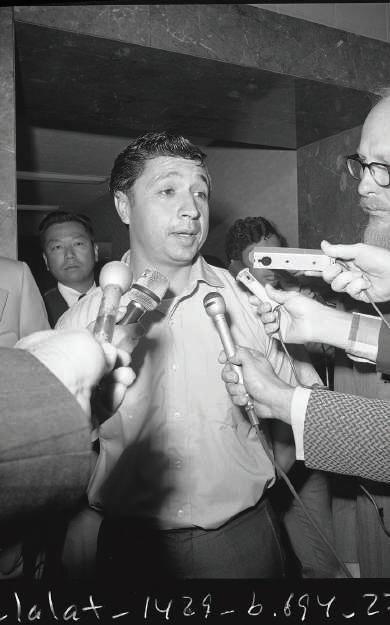
My grandfather’s lawyer argued that his mental health was in shambles. His attorney, Michael Hannon, claimed high stress levels. He said my grandfather was struggling because he had a wife and eight children and no job. He said society subjected my grandfather and other Mexican Americans to injustices and that caused him to commit the hijacking.
A court-ordered psychiatrist testified that Chavez Ortiz was a paranoid schizophrenic. A six-man, six-woman jury deliberated for nearly seven hours before reaching their decision. He was found guilty.
Sentence Shocks Community U.S. District Judge Charles H. Carr sentenced Ricardo Chavez Ortiz to life in prison. The community was shocked. Life in prison was an extreme sentence.
Columbia GSAPP -

Enclosures: Quotidian Carceralities in the US and Occupied Palestine (Angela Davis), CC BY 2.0, https://commons. wikimedia.org/w/index. php?curid=75601775
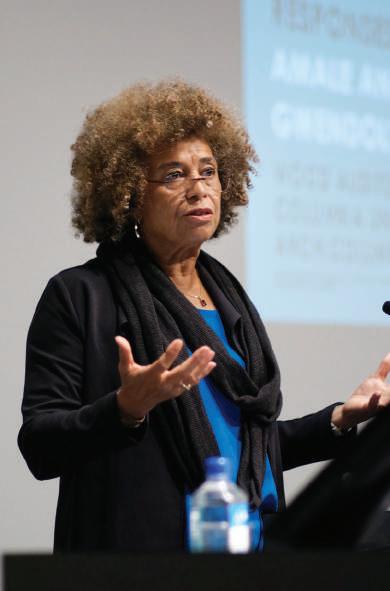
Those who listened to the speech live, experienced a sense of heroism. Luis “Nacho”
Quinones is a retired educator from La Academia Dolores Huerta and a community activist from Silver City, New Mexico. He says what my grandfather did inspired him.
“The lives and exploits of Chicano activists are very seldom mentioned,” Quinones said. “I consider this one of the highest acts of bravery ever committed by a Chicano activist.”
My father would never forget that day either.
He was in class at Roosevelt High School in Boyle Heights when he was asked to go to the administration office because two FBI agents wanted to speak to him.
“Hijackers were getting relatively short sentences,” Koehner said. “If you lose a trial, you get a much harsher penalty than just taking the plea bargain.”
The American dream shattered for the Chavez family. My grandmother and her children no longer had the head of the house around. My grandfather would no longer be able to help raise the children.
The family was allowed to see my grandfather before he went to federal prison. They met with him in a room for the last time.
“We were crying, and he also cried,” my father told me. “I still remember that moment. It was pretty sad.”
32 33 Collegian Times SPRING 2022 SPRING 2022 Collegian Times
ILLUSTRATION BY BEATRICE ALCALA
PHOTO COURTESY
ACTIVIST ANGELA DAVIS supports Richard Chavez
SCAN HERE
As the Chavez family wept for their father, activists looked up to the convicted hijacker.
Famed activist Angela Davis spoke at California State University Fullerton on the topic of oppression, and the rise of fascism within the United States. Those in power used fascism to ensure people of color had limited means and no decision-making influence according to Davis.
“There is Ricardo Chavez Ortiz, who hijacked a plane,” Davis told a room full of student activists.
“He felt that this would be a way to dramatize the racist oppressions which Chicanos and black people deal with every moment of their lives. His gun wasn’t even loaded when he hijacked the plane. He’s one of the brothers who we are building a movement, 'cause he can win on appeal, we have to fight for his freedom.”
People applauded frantically.
My grandfather’s prison sentence was reduced to 20 years. After that, he was a free man. There was one caveat. He abandoned his family by choice.
Chavez Ortiz would eventually decide that America was not the home he wanted to live in, so he returned to Mexico.
“He chose to be deported,” my dad said. “We were waiting for him and we were sad because we found out he chose to be deported into Mexico.”
After that, he ignored his family.
“He never sent a letter and never made a phone call to us,” my father remembers. “He never made an attempt to contact his family.”
As a child, I only saw him whenever my family visited Mexico. The interactions were always brief. Very short conversations, almost all of them about Jesus.
He Played One Last Song
The last time I visited my grandfather was in the outskirts of a bustling town called Zamora, Michoacan. I remember that day fondly. It was during the pandemic. Across the world people were tuning in to see the final hours of the election between then President Donald Trump and Joe Biden.
I woke early because the mere thought of missing out on even the smallest bit of news was just nerve-wracking. However, I double masked and took a cab with my brother and father to visit my grandfather.
We searched around for his tiny home, asking locals if they had seen him by any chance. He referred to himself as the priest of the town even though he was never ordained.
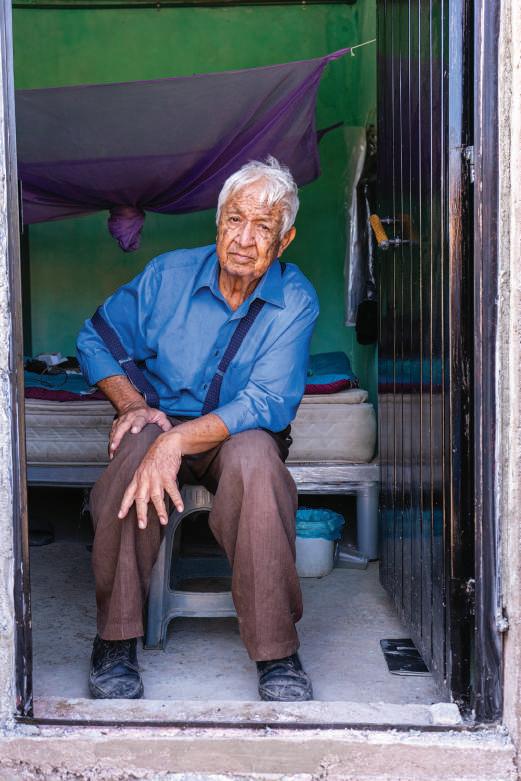
Eventually, someone knew whom we were talking about and pointed in the direction of his tiny room, no bigger than a shed, in the middle of the desert.
When we arrived, he stepped out. The once
beloved airline hijacker was relegated to a man who had nothing except a bed, a tablet, a notebook where he kept his thoughts, his religious teachings and a guitar.
He welcomed his family with a warm heart, and told stories that seemed crazy.
Since he had chosen to be deported to Mexico, my grandfather lived in an area controlled by sicarios, the Spanish term for hitmen.
“There are sicarios across the street from me, behind my very walls, even some of the children are sicarios” Ortiz said. “It’s a dangerous world to live in.”
He played the guitar for us one last time before we left. He was a decent player. However, you could tell that there was pain in his voice. A pain that was maybe the result of not having a closer bond with his grandchildren or with his son. The last thing he ever told me was to visit him again. He wanted to invite me to a restaurant in Tingüindín, his hometown.
“I want you to promise me that you’ll come back,” he told me. “If there’s one thing you need to keep, it’s your promises.”
I never got to keep that promise.
On Dec. 21, 2021, Ricardo Chavez Ortiz died after some heart complications. For 88 years, he lived a life that seemed impossible at first glance. Many grandchildren and great grandchildren survived my grandfather. Honestly, almost too many to count.
The Chavez family was not surprised. A poor lifestyle in desert-like conditions affected his health.
For some, he died the day he abandoned his family.
“I think it is worse when you know that you have a father, and you never see him” my father said. “When everybody found out about his death it was like ‘well, he’s been dead already.”
Whether you believe that Ricardo Chavez Ortiz is a hero who supported Chicano civil rights or a neglectful parent because he abandoned his family is for you to decide.
However, it’s important to remember what happened with Frontier Flight 91 and why. If stories such as my grandfather’s are forgotten, then the system that benefits from the oppression of people of color will go unchallenged.
Just do not hijack an airplane. ∂
DISABLED STUDENTS SPEAK OUT
A lawsuit filled in 2017 by disabled students at L.A. City College returns to the 9th Circuit Court of Appeals after three months of failed negotiations.

Roy Payan and Portia Mason are plaintiffs in the lawsuit.
Patricia Barbosa, the plaintiffs’ lawyer said in late March that she could not divulge any details. “Yes we continue to negotiate but I can’t discuss anything raised in mediation,” Barbosa said. “When we come to a decision LACCD Board of Trustees will have to vote on it and the vote will be public.” Students alleged in their lawsuit that the college failed to provide textbooks, handouts and classroom materials in a format that blind students could use.
The district argues that what happened at City is “unintentional discrimination.” Payan says that the district did not agree with his requests during negotiations. You are invited into the world of Roy Payan and Portia Mason as they talk about their challenges as they pursuit their education.

 BY SORINA SZAKACS
BY SORINA SZAKACS
w 34 35 Collegian Times SPRING 2022 SPRING 2022 Collegian Times
PHOTO BY CHRISTIAN CHAVEZ
Richard Chavez Ortiz welcomes family at his home in Zamora, Michoacan on Nov. 7, 2021. It is the last photo of the late activist before he died on Dec. 21, 2021.
Find extended content on https://collegianwired.tumblr.com
Roy Payan and Portia Mason (third and fourth from the left) are plaintiffs in a lawsuit against the L.A. Community College District. They want the district to make the education of visually impaired and blind students more accessible.
LA BREA AVENUE: PART OF AN ICY WORLD NOW LOST IN TIME
Thousands of years ago, before civilization took over and cars traveled the Wilshire corridor daily, dire wolves roamed Los Angeles as one of the top predators of Pleistocene Epoch’s megafauna.
BY SORINA SZAKACS
Travel between worlds does not require a yellow ring like Digory used in “The Magician’s Nephew,” C.S. Lewis’ first installment of “The Chronicles of Narnia.” A ticket to the La Brea Tar Pits Museum in Los Angeles does the trick.
While few would associate La Brea’s portal with Lewis’ fantasy world, it is a place where imagination meets reality. Once more, literature finds its inspiration in a world long gone.
George R.R. Martin created the six dire wolves in “A Game of Thrones” and paired them with the Stark children, leaving the albino to the bastard John Snow.
While he made Ghost, Gray Wind, Lady, Nymeria, Shaggydog and Summer bigger than a pony and “twice the size of the largest hound” in the Stark family kennels. He also gave them different fur colors to match the personalities of their owners.
But none of those traits have anything to do with the real world underneath the former Rancho La Brea.
Dire wolves that roamed the La Brea corridor during the Last Ice Age were not bigger than ponies, nor were they so colorful as their fantastic counterparts. They traveled and hunted in today’s Los Angeles, from Disney Hall to LAX and from the Griffith Observatory to Santa Monica.
EVERYBODY COMES [TO THE TAR PITS] FOR THE BIGGER ANIMALS, BUT
Dire Wolves Share Distant Relative with Gray Wolves
A group of 49 scientists studied dire wolf DNA from fossils dating from 13,000 to more than 50,000 years ago. The research provides new information on North America’s biodiversity changes over hundreds of thousands of years. Dire wolves were not wolves after all, but only a distant cousin of the gray wolf from the canid genus.
Dr. Kieren Mitchell conducts research at the Australian Centre for Ancient DNA (ACAD). He is one of the study’s authors and says the new findings show dire wolves evolved in isolation.
“Instead of being a close relative or subspecies of the gray wolf, we now know that the dire wolf belonged to a distinct canid lineage,” Mitchell said. “They were so different that—unlike gray wolves and coyotes—dire wolves and gray wolves could not interbreed.”
Mairin Balisi Postdoctoral research fellow at La Brea Tar Pits
wolves that weigh around 150 pounds needed to eat large prey to survive.
Mauricio Anton is a well known paleoartist who recreates ancient worlds through art. His dire wolf illustrations evolved over time. In the past, based on fossil studies, Anton depicted dire wolves that looked similar to gray wolves. In 2021, after scientists made new discoveries about dire wolves, he changed the look of the carnivores to reflect those findings.
Yes, Dire Wolves Existed George R.R. Martin might be the creator of the most popular six dire wolves in literature and television history, but the famous pack is not the contraption of his pure imagination.
Five-thousand years before civilization, ice covered much of the earth. Giant untamed mammals ruled it.
Now extinct, the Pleistocene carnivores, the dire, or grim wolves Aenocyon dirus are the most commonly occurring mammal fossils in the asphalt deposits. They were widespread in North America during the Pleistocene Epoch. Climate change, the competition with saber-tooth cats and human hunters for the same prey and the disappearance of large herbivores might have been the reasons why dire wolves went extinct.
According to “Rancho La Brea: A record of Pleistocene Life in California,” by Chester Stock, dire wolf fossils have been found in deposits at Livermore Valley, along the border of the San Joaquin Valley, at McKittrick and Carpinteria and at San Pedro.
La Brea Tar Pits are unique because they are the only active Ice Age fossil site in the world located in the middle of a city—and special for the number of dire wolves recovered from the Pleistocene deposits.
Thousands of cars trek north and south during rush hour on La Brea and east and west on Wilshire. But 11,000 years ago, dire wolves and saber-tooth cats preyed on mammoths and antique bisons. Predators followed the herds from the tar pits to where UCLA is today and to L.A. City College and as far south as the Valley of Mexico, some 2,000 miles away. Saber-tooth cats were at the top of the food chain. Dire wolves, as fierce hunters as they were, often became an easy kill next to a bison carcass.
Mairin Balisi is a postdoctoral research fellow at the La Brea Tar Pits and a carnivore fossils expert. She always starts her presentations with the statement that dire wolves are real.
“The Tar Pits are scientifically significant because I feel that scientists know about it all over the world,” Balisi said. “But people in L.A. don’t know what a gem they have right here, in the middle of the city- the only urban Ice Age active excavation locality in the world.”
4,000 and Counting

La Brea Tar Pits Museum is now home to fossils of 4,000 dire wolves recovered from the tar pits. Balisi says the excavations continue because there are more fossils to recover. Each piece is part of a bigger puzzle.
“Each individual tells a slightly different story,” Balisi said. “Each individual also lived at a different point in time when issues were slightly different.”
Based on evidence found in the tar deposits, scientists know that dire wolves were social animals. The fossils recovered at La Brea show mixed ages.
“Different animals with different behaviors are expected to be preserved in different numbers,” Balisi said. “If you have an animal that hunts in a solitary way, that is not social, then you might find only adults or only babies, but rarely a mix of the two. At the Tar Pits though, we have a range of ages of dire wolves.”
The details suggest that dire wolves hunted and traveled in packs that were family groups.

Balisi says dire wolves might have been both active hunters and scavengers because they could crush bones.
“All of that suggests dire wolves were able to eat animals that were larger than them,” Balisi said. “… That is challenging, unless you hunt with a pack. These are building blocks that we are piecing together … and they suggest that dire wolves were active hunters.”
Balisi says that based on calculations done by scientists in the 1990s, large animals like dire
The packs roamed the Santa Monica Mountains and the open grasslands and plains, like the former Rancho La Brea area. They did not migrate in search of food. They lived and hunted in lowlands where large herbivores were present.
Angelenos Create Tar Pits Misconceptions
The pits raise misconceptions among Angelenos. Danaan De Neve Weeks is a postdoctoral research scientist at La Brea Tar Pits, and says that while some people think the tar is hot, others believe it acts like quicksand.
“The tar is more like flypaper or like a sticky rattrap,” Weeks said. “That is a lot more horrific in a lot of ways, because something would wander in and get stuck to the surface … and die of starvation and dehydration.”
Some believe there are dinosaur fossils in the tar. Others think the museum is a Disneyland-like attraction.
“They think that everything is staged,” Weeks said. “That the people in the fishbowl lab are actors.”
Weeks created filters of Pleistocene megafauna to help people see what Ice Age giants looked like. The filters show anatomically correct animals and can be used with apps like Snapchat and Instagram.
“We are creating several augmented reality learning experiences,” Weeks said. “We are testing if people are learning more from them, than they are learning from traditional museum signage.”
“The researchers … asked me to depict the dire wolf with a reddish coat in order to tell it more easily apart visually from the gray wolf,” Anton said. “But we don’t have any direct evidence from the fossil record about the coat color of the dire wolf.”
Balisi says it is harder to determine the fur color of mammals.
“For example, early birds feathers can have actual color cells that you can look at under the microscope and be like oh this is a color cell for this particular color,” Balisi said. “Mammals don’t have that so much and that’s why we don’t know for sure what the [dire wolves'] color was. Scientists are looking at dire wolves as they were most closely related to jackals and maybe dire wolves looked like that.”
Research Opens Window into Ancient World The Last Ice Age is long gone, but Southern California did not look much different back then, than it does today. To remove all modern-era roads and buildings and leave the place bare of civilization would be as close a look at the Last Ice Age as possible.
Balisi says the landscape is the same. The Santa Monica Mountains were already here when the dire wolves roamed.
Southern California was not an icy place. Balisi says that the period is named Ice Age because glaciers were covering more of the planet than they do now. The climate was different in the Los
36 37 Collegian Times SPRING 2022 SPRING 2022 Collegian Times
THERE’S A BIGGER STORY HERE THAT IS VERY RELEVANT TO OUR ISSUES TODAY.
PHOTO COURTESY GIANT SCREEN FILMS
After scanning, please type the password TOTIA SC to access the video.
Dire wolves prey on a prehistoric horse.
Angeles area, but the region was not covered in ice.
The Last Ice Age, some 15,000 to 10,000 years ago also known as the late Pleistocene, was the last time when some of the animals found in the area today co-existed with the megafauna—large animals now extinct.
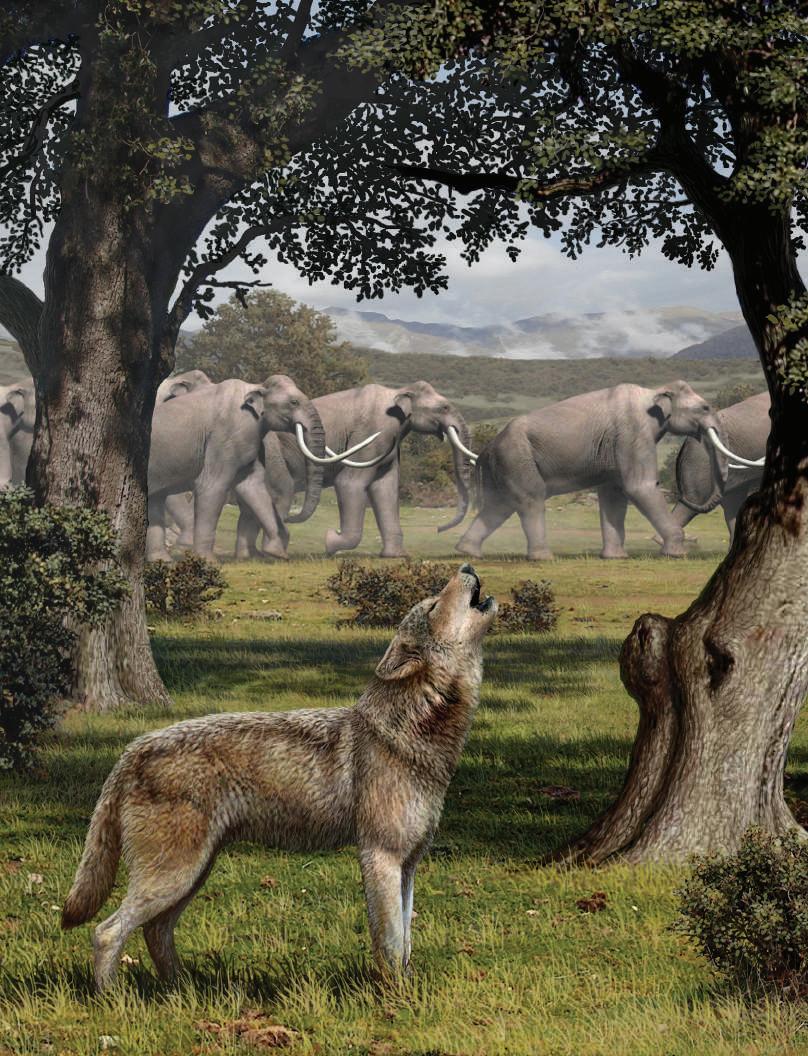
“[Pleistocene] It set the stage for the period we are living in,” Balisi said. “There was a time when dire wolves were running around with our gray foxes, our coyotes, striped skunks, and bobcats. We lost the larger animals from back then.”
The dire wolves coexisted with other large carnivores like saber-tooth cats –Smilodon fatalis–, short-faced bears–Arctodus simus–, the American lion–Panthera atrox–, a cousin of the African lion, and the gray wolves –Canis lupus–.
“This is interesting because there are five species of large carnivores which is more than what we

‘LORD STARK,’ JOHN SAID.
… ‘THERE ARE FIVE PUPS,’ HE TOLD FATHER. ‘THREE MALE, TWO FEMALE.’
usually have in ecosystems today,” Balisi said. “In North America, our closest comparison might be Yellowstone National Park which has only two species of large carnivores today: the gray wolf and the mountain lion.”
Pleistocene Southern California was also home to several species of herbivores: the Columbian mammoth–Mammuthus columbi–, the American mastodon– Mammut americanum–, the Western horse–Equus occidentalis–, yesterday’s camel–Camelops hesternus– and the antique bison–Bison antiquus– among others.
No woolly mammoths roamed the La Brea corridor during the Last Ice Age.
Balisi says that North America was, millions of years ago, the place of origin and evolution for horses, camels and dogs. Fossil evidence shows that some migrated to other regions, while the ones who stood their ground went extinct.
… ‘YOU HAVE FIVE TRUEBORN CHILDREN,’ JOHN SAID. ‘THREE SONS, TWO DAUGHTERS. THE DIREWOLF IS THE SIGIL OF YOUR HOUSE. YOUR CHILDREN WERE MEANT TO HAVE THESE PUPS, MY LORD.’
“All the horses that we have today are imports. However, the Western horse evolved in this region,” Balisi said. “Horses, camels and dogs, all originated on this continent. With climate change, geographic change and tectonic change
these animals were able to migrate out of North America all over the world.”
Space and Time Dictate Environments
Fossil studies at La Brea reveal that the region had multiple environments. Scientists also take into consideration a span of at least 55,000 years and believe there is a possibility that the same area had multiple types of environments across time.
“We know that there were multiple environments across space,” Balisi said. “At least some of that was a savannah-like environment, but there were also mixed woodlands, the chaparral environment that we have today. There was some of it already, like coastal sage scrub-type environments.”
Scientists at La Brea work on creating a complete picture of the ecosystem, in which large mammals thrived and then went extinct. Balisi says that while in the past the focus was on recovering the large fossils found in tar deposits, now it shifted toward plants and climate. Because plants need specific temperatures, humidity and shade to thrive, they tell the best story of climate.
“The Tar Pits preserve a record of climate change that might be useful for us interpreting the period of climate change that we are in now,” Balisi said. “Plants are closely tied to the climate, that’s why people are studying the climate now.”


According to the La Brea Tar Pits Museum
“Botany Collections,” scientists identified 158 species of wood, seeds, cones, leaves, and pollen. They used fossils recovered from tar deposits and created a Pleistocene Garden to give visitors a better understanding of how L.A.’s flora looked during the Last Ice Age. They say that 50,000 years ago, the climate in L.A.’s basin was similar to today’s Monterey peninsula. Monterey gets three more inches of rain and fewer sunny days than Los Angeles. The summer temperature in the peninsula is around 66.5 degrees while in L.A. it is closer to 90 degrees.
Weeks says that all the plants that grow today in the Pleistocene Garden were also present during the Last Ice Age.
“It wasn’t that long ago in evolutionary terms,” Weeks said. “So a lot of the plants that were here 20,000 years ago are still here and are things that mammoths would have eaten.”
Scientists Review Takeaways of Extinction
38 39 Collegian Times SPRING 2022 SPRING 2022 Collegian Times
“CALIFORNIA HAS REALLY GOOD LAWS ABOUT ENVIRONMENTAL PROTECTION AND CULTURAL AND HISTORICAL PRESERVATION, SO EVERY MAJOR CONSTRUCTION PROJECT NEEDS A PALEONTOLOGIST TO SUPERVISE EXCAVATIONS. IF THERE IS A FOSSIL, THE PALEONTOLOGIST STOPS THE CONSTRUCTION.”
Mairin Balisi Postdoctoral research fellow at La Brea Tar Pits
ICE AGE AR
Natural History Museum of Los Angeles County and USC researchers collaborated to create scientifically accurate virtual models of Pleistocene fauna. Augmented Reality filters are available on Instagram, Snapchat and Sketchfab.
George R.R. Martin - "A Game of Thrones"
PHOTO BY CHRISTIAN CHAVEZ
ART BY MAURICIO ANTON
Mammoths walk in the background at the La Brea Tar Pits area while a dire wolf howls in the foreground. Early illustrations created by Mauricio Anton show dire wolves very similar to gray wolves.
PHOTO COURTESY GIANT SCREEN FILMS Columbian Mammoth trapped in the tar at the La Brea Tar Pits.
ART BY MAURICIO ANTON
FROM HUNTERS TO HUNTED WAR ON WOLVES
A research team at the Tar Pits works on carbon dating to reconstruct the history of the extinction of large mammals from the Last Ice Age. Scientists try to understand why those animals went extinct about 10,000 – 11,000 years ago. They look for the causes to narrow down the time interval of the extinction. They include factors like the decline of certain plants or animals and possible increase of fires. Those details might help reconstruct the story.
“We know pretty well the individual players, the individual species,” Balisi said. “So we try to piece them together into a big story of what was going on with the whole community, with the ecosystem.”
The question of extinction does not have only one answer. Scientists research multiple ideas on how Pleistocene megafauna went extinct.
“The main culprits that we think of are humans and climate,” Balisi said. “And that’s not just based on [findings at] the Tar Pits but also based on other things that scientists have discovered around the continent, around the world. What we are finding at the Tar Pits now
is a more detailed answer to that question. It is probably still humans, probably still climate, but now we are finding that there might be fire involved as well.”
California’s problems include fires, earthquakes, water availability and drought. They were problems during Pleistocene as well.
According to the “Botany Collection” article, when the climate in Southern California became cooler, the amount of carbon dioxide in the atmosphere decreased and that affected the photosynthesis process. Scientists found evidence of “severe stress from carbon starvation,” in a 14,000 year-old fossil tree and other plant fossils recovered from the tar deposits at La Brea.
Jessie George is a graduate student at UCLA who studies Ice Age plant material at the La Brea Tar Pits.
She says that carbon dating revealed that plants in the regions responded to changes in climate. Bishop pine fossils found in the tar deposits suggest that in the past, Los Angeles had different climate patterns, similar to the
ones where the bishop tree thrives today.
“We are seeing this sorting of species as climates shift,” George said. “We have bishop pine in the fossil collection. You see it north of Santa Barbara, in Baja California and on the Channel Islands, but not in Los Angeles, not in San Diego. … They live in areas that get heavy summer fog. In L.A. we do not get marine fog now, so just looking at that species you can see one of the changes that happened in climate.”
If the plants of Pleistocene Los Angeles were starving, so were the herbivores that fed on them. And that could have affected the large predators as well. When prey was scarce, dire wolves chewed on bone more. Tooth breakage began to occur more frequently, based on recovered fossils.

“This could help to explain the dire wolf’s extinction—if dire wolves had become very specialized, then a change in their environment could be very disruptive,” Mitchell said. “In contrast, gray wolves may have been less specialized and better able to overcome the same environmental change.” ∂

40 Collegian Times SPRING 2022
“EXTINCTION IS FOREVER. ONCE THEY ARE GONE, THEY WILL BE NO MORE.”
TONYA LITTLEWOLF, WOLF MOUNTAIN SANCTUARY FOUNDER
PHOTO BY LOUIS WHITE
Find extended content on https://collegianwired.tumblr.com
Dire wolves and gray wolves fight over prey. Mauricio Anton depicts dire wolves with a reddish coat because of new discoveries made by scientists in 2021.
‘TIME TO HEAL’ MATERIALIZES 36Years Later
Lifelong Star Trek Fan follows in Creator’s Footsteps
BY CHRISTIAN CHAVEZ
It was the day Vulcans landed on Earth for the first time—star date April 5, 2063. “Trekkers” celebrate it as “First Contact Day.” Stan Woo, a “Star Trek” enthusiast and LACC alumnus, followed the mission of the Starship Enterprise to a T and went “boldly … where no man has gone before.”
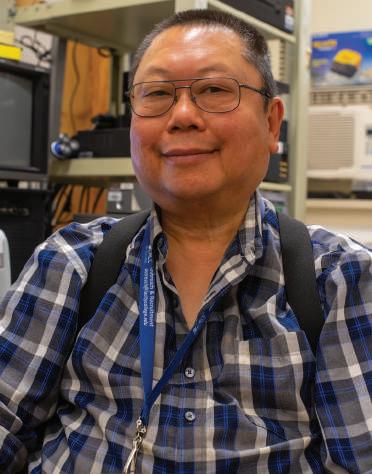
It took him almost four decades of dedication to finish and release his Star Trek fan film “Yorktown: A Time to Heal.”
The original cast and crew members of the “Yorktown” movie witnessed their 36-year-old work on March 26, 2022. Woo invited the team back to L.A. City College for the premier of the 30-minute “Star Trek” inspired film.
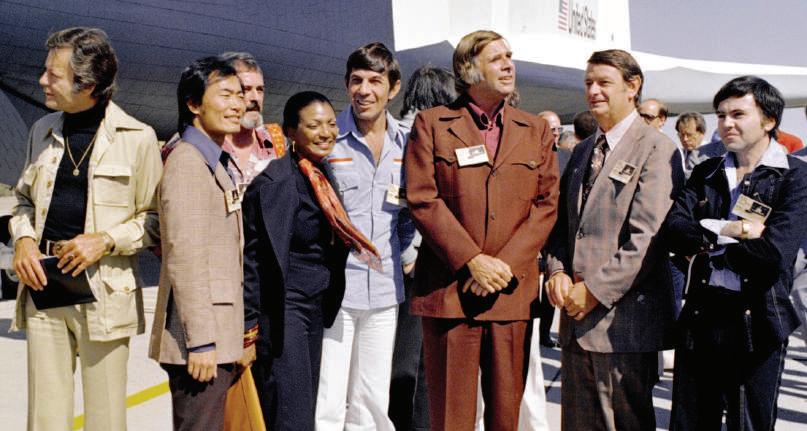
Steven Goodpaster is part of the team. He played one of two bad guys.
“There are so many unfinished things in my life,” Goodpaster said. “Just to see this come to fruition, the effort and time put to it, I’m just absolutely thrilled to see this done.”
Since “Yorktown” was uploaded on YouTube on April 5, 2022 it has received almost 60,000 views. The film does not generate any income for the team. To avoid copyright-related action from “Viacom”, the company that owns the rights to Star Trek, Woo turned off the advertising option on the streaming channel.
Woo Skips Commencement For Star Trek
Woo started work on the fan film in 1981 when he was a student at Fairfax High School.
“We were in a science fiction club,” Woo said. “Some guys had a plan to do a film called ‘Icarus.’ My friend Roger Wider said, ‘hey why don’t we make a Star Trek film?’”
They created “Yorktown: In Temporary Command.”

When he enrolled in cinema classes at L.A. City College, Woo used the short-film in one of his classes.
“It didn’t go over well,” Woo said. “It was a low
Watch
spot in my life, it was embarrassing. I wanted to do something else to erase that embarrassing moment.”
That is how “Yorktown: A Time to Heal” was born, and it is not a typical fan film. What sets it apart is the return of Hikaru Sulu, played by George Takei, the same actor who played the lieutenant commander of the original U.S.S. Enterprise.
Woo had to skip his graduation ceremony at City to present his project to Takei. An opportunity arose through Woo’s distant cousin, Michael Wilson, who was running for an L.A. City Council seat.
“And George Takei was working on the campaign,” Woo said. “My dad and I went to Golden Dragon in Chinatown. They were having a fundraiser for Michael and George was going to be there. So, I skipped my commencement at L.A.C.C. to attend that fundraiser. I went to the bar to grab a glass of burgundy and start talking to George Takei about the film.” Takei appeared briefly in Woo’s film because of that conversation.
Canadians Get Involved
“Trekkers” found out that Takei brought Hikaru Sulu back for a brief appearance in a fan film, but as years went by and the movie was not released, the validity of its existence faded. Until one day.
John Atkin, a Canadian-born filmmaker interested in “Yorktown,” decided to contact Woo and help him finish the production of the movie.
“I first heard about Yorktown as a young boy back in 1987,” Atkin said. “I read about the film in a magazine called “Starlog.”
Atkin saw Sulu wearing a costume that looked familiar to the original TV show but was slightly different. He searched for “Yorktown” online but for years he could not find anything.
“There was a part of me that was wondering if I imagined this fan film,” Atkin said. “Sure enough, I found an old issue of the ‘Starlog’ magazine with names. I searched high and low for Stan Woo on Facebook and … and I finally found him. … I had film studies in college, so off the fly I asked him if he wanted a hand in finishing the film.”
They discussed ideas for the project during telephone conversations between the U.S. and Canada. Woo accepted a few months later.
“We talked back and forth for a few months, and he decided to give me the go ahead,” Atkin said. “I put together a team of people to help finish filming the missing scenes that had never been filmed, we also wrote some new scripts for
the film to flesh it out and make it a longer story.”
Designer Puts Star in Starship
What makes Star Trek iconic is the design of the Enterprise deck, of ships and the costumes.
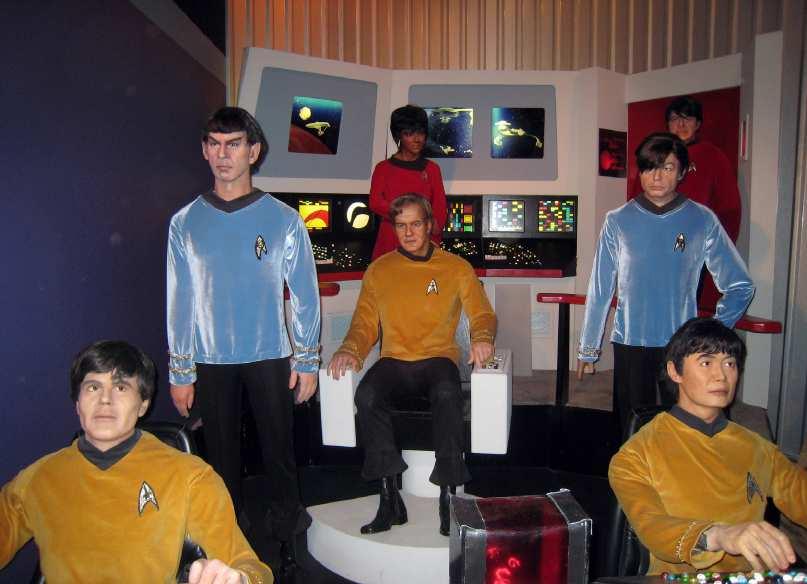
Andrew Probert was the co-designer of the U.S.S. Enterprise for Star Trek: The Motion Picture. His work on the film would land him a job for Star Trek: The Next Generation.
“I liked working with Gene Roddenberry”
Probert said in an interview with Collegian Times. “We met on the motion picture when he and Robert Wise would come over to ‘Robert and Abel Associates’ for production meetings.”
In charge with design, Probert would receive feedback directly from Roddenberry.
“People always say ‘oh you created the Enterprise,’” Probert said. “It’s like no, Gene created it. I designed it.”
Woo contacted Probert about the design of some of the ships and the latter helped the producer with drawings.
Probert watched the finished film and was impressed with the quality of the final product.
“I wish it came out a lot earlier, because I think it looks good,” Probert said. “It was very satisfying to finally see Stan continue the fight until this thing was actually completed. … I think he’d [Roddenberry] get a kick out of it. I think he would have enjoyed a lot of what they put together.”
Starship Enterprise Finds its Strange New World
The original “Star Trek” premiered on television in 1966. It told the story of James T. Kirk, captain of the U.S.S. Enterprise, who led his crew in search of adventure, knowledge and exploration of new civilizations.
Alongside Captain Kirk was Lieutenant Spock, a mixed human-Vulcan alien. Spock had noticeably pointy ears and used logic rather than emotions. Characters such as Kirk and Spock would become household names to those who would watch the show.
At the time, Star Trek had low ratings and the National Broadcasting Company (NBC) considered cancelling it. Fans stepped in, and the show survived.
Without the dedication of those fans, “Star Trek” would have faded into obscurity. Instead, it has movies, spinoffs, reboots, games and toys. The search for new civilizations continues. Space is “the final frontier,” and Stan Woo and his team are part of the movement. ∂
When Gene Roddenberry graduated from Los Angeles City College in 1941, he did not imagine that his most famous creation would fly into fandom, nor that eight decades later another alumnus would use it as inspiration for his magnum opus.
AWARD WINNER
“Yorktown: A Time to Heal “ won four Best Fan Film awards from Trekzone, Falcon International Film Festival (FIFF) April Edition, Hong Kong World Film Festival and Oniros Film Awards, among others. Stan Woo received Best Executive Producer / Producer award from Trekzone.
Trekzone- Best Fan Film
Best Executive Producer / Producer

Winner Diamond Award- Best Director of a Fan Film
Best Actor in a Fan Film George Takei
42 43 Collegian Times SPRING 2022 SPRING 2022 Collegian Times
1. COURTESY OF CREATIVE COMMONS (PUBLIC DOMAIN)
Taken on Sept. 17, 1976. The Space Shuttle Enterprise rolls out of the Palmdale manufacturing facilities with Star Trek television cast and crew members. From left to right, the following are pictured: DeForest Kelley, who portrayed Dr. “Bones” McCoy on the series; George Takei (Mr. Sulu); James Doohan (Chief Engineer Montgomery “Scotty” Scott); Nichelle Nichols (Lt. Uhura); Leonard Nimoy (Mr. Spock); series creator Gene Roddenberry; NASA Deputy Administrator George Low; and, Walter Koenig (Ensign Pavel Chekov).
2 1
2. CREATIVE COMMONS ATTRIBUTION 2.0 GENERIC Star Trek: The Original Series crew at “The Palace of Wax”
SCAN HERE
"Yorktown: A Time to Heal"
RUBY RUBY: CHASING THE MOON’
BY JOAN MAO
Ruby’s tips to future fashion design students
Don’t be afraid. If you pursue what you love, you’ll be fine. Practice good time management.
Go beyond the minimum tasks.
Follow Ruby at @ rubyornotruby626 and model Jane Nguyen at @ jaaneee4
Designer Ruby Cai takes “The Moon and Sixpence Collection” to L.A.’s streets for a colorful and joyful presentation of a clothing line inspired by William Somerset Maugham’s novel, “The Moon and Sixpence.”

It is loosely based on the life of French artist Paul Gauguin. The protagonist leaves his secure stockbroker job to pursue his passion for painting.
“All over the place was sixpence, but he looked up at the moon,” says Ruby of her favorite quote from the novel.
She wants to chase her moon—to be a fashion designer.
Before attending the Fashion Institute of Design & Merchandising (FIDM), Ruby had no experience in fashion. She didn’t know how to sew or draw, nor had a clue about patterns. The extent of her knowledge of fashion came from her passion for hip-hop dancing.
Ruby had just finished her B.A. degree in accounting at Cal State Fullerton. Her parents pressured her to apply to graduate school.
When she visited FIDM’s Orange County campus and entered their bright pink lobby, she saw a monitor replaying the previous DEBUT Collection designers’ show. Instantly, Ruby knew she wanted to learn about fashion design, so she could design hip-hop streetwear.
She initially wanted to use her accounting background and choose a product development program.
Her adviser, however, encouraged her to choose what she loved. That’s how Ruby started her fashion design journey. Her strong work ethic and enthusiasm secured her a place into FIDM’s Fashion Design Advanced Study.
“The collection is idealistic,” Ruby says. “I have a dream. We all have a dream. It may not be easy to keep and maintain. But as my brand name, ‘Ruby or Not Ruby,’ that is an attitude. Keep your passion and just do it.”
Ruby was also a finalist in the 14th Annual SUPIMA Design Competition. Her designs symbolize her freeing herself from a strict childhood and the release of her creative side— “Get out from the limited space and fly free into the world of the true self.” ∂
44 45 Collegian Times SPRING 2022 SPRING 2022 Collegian Times
OR
NOT
1
PHOTOS BY JOAN MAO
1. The Moon and Sixpence Collection: Ruby or Not Ruby’s playful brown creatures represent “the true self inside of everyone,” and the credit card represents the reality. Ruby pairs the pink Neoprene oversized jacket with a yellow jersey T-shirt and twill chocolate brown shorts. Slippers complete the streetwear look.

2. Robots provide the inspiration for this entire look with giant buttons made from self fabric in velveteen with fibers inside, which represent eyes. The pink hole represents the mouth, which is also made of self fabric (velveteen) and cut on the bias.
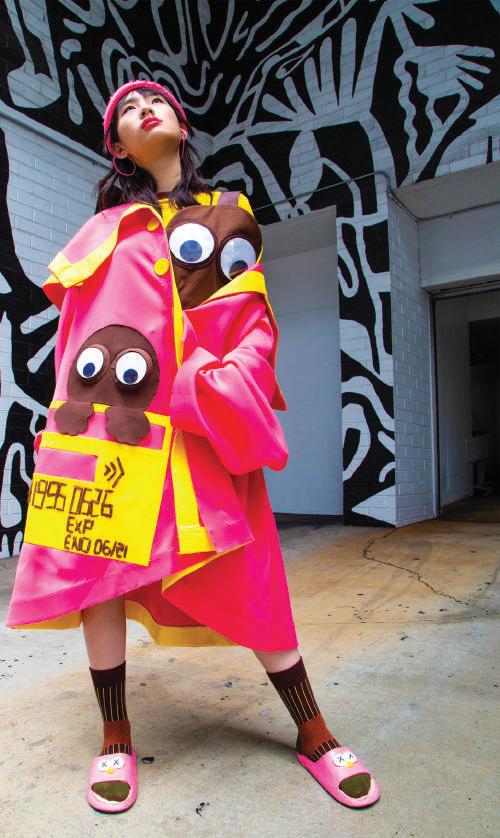
3. The Moon and Sixpence Collection: The two buttons on the Neoprene brown and pink jacket represent the two people in “The Moon and Sixpence,” people who look at the ground and people who look at the moon. The “reach the moon,” oversized gloves say dream big and grab it. The designer chooses stitches on the jacket and on the fleece yellow shorts, as part of the design to show more of the textile on the garment.
4. Supima Collection: This denim jacket and shorts delight in salmon pink and tiger orange, with 360-degree pleated back and peg drape shorts. Ruby says they represent her strict childhood. She felt like a robot growing up. The two buttons represent her eyes looking out and searching for what she wants for herself.

46 47 Collegian Times SPRING 2022 SPRING 2022 Collegian Times
2 3 4
‘MASAO AND THE BRONZE NIGHTINGALE’ Directors Hope for ‘Curtain Call’
BY SORINA SZAKACS PHOTOS BY JOAN MAO
Art confronts history in a play that recalls WWII, the second wave of the Great Migration and the reshaping of an entire community that turned Little Tokyo into Bronzeville in 1942.
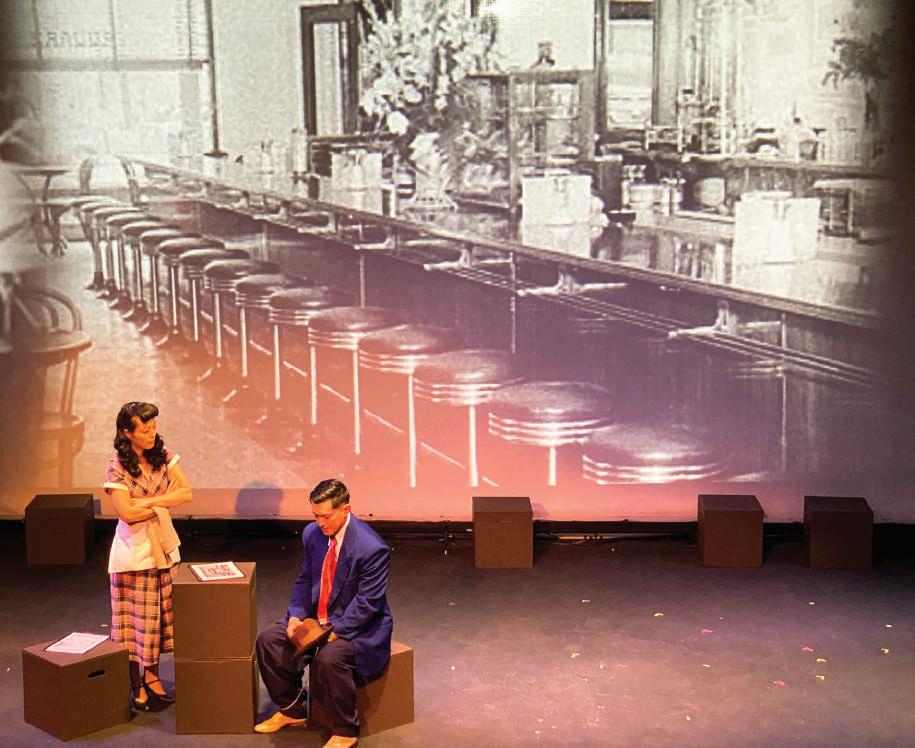
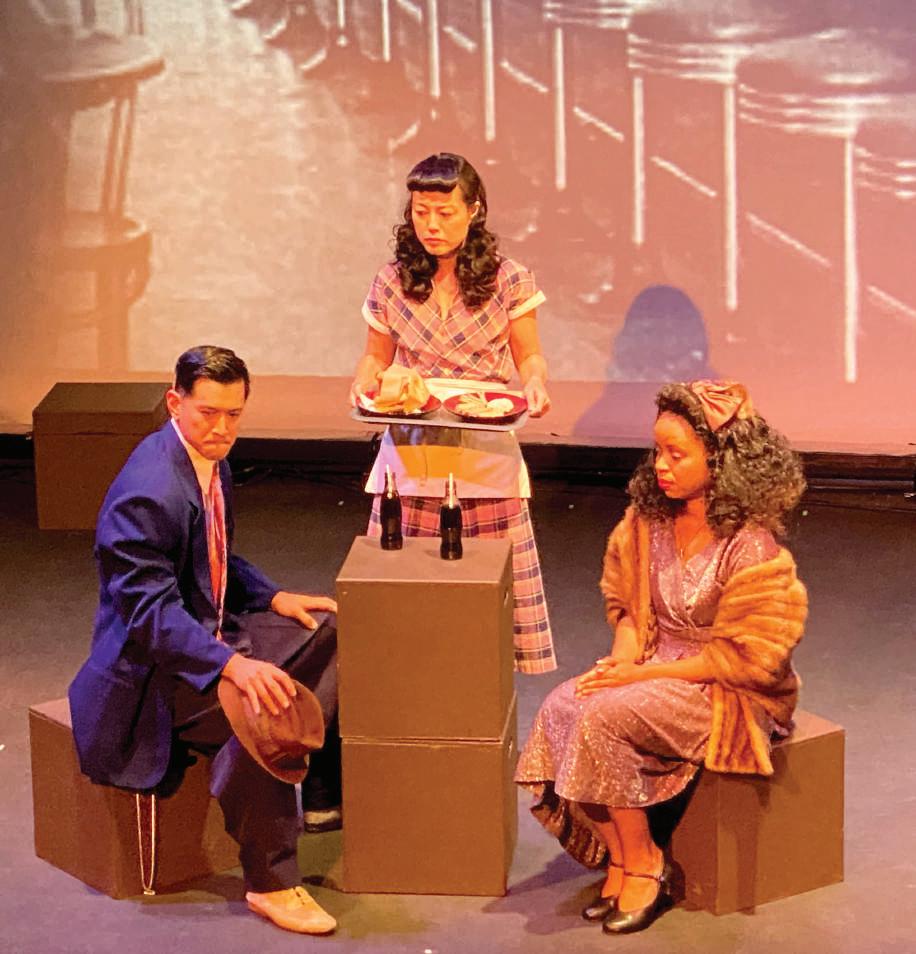
Executive Order 9066 removed 100,000 residents of Japanese descent from the West Coast following the Pearl Harbor attack. The majority were American citizens.
While Japanese Americans were in internment camps, African Americans who were barred from living in all but a few zip codes in 1940s Los Angeles moved into Little Tokyo as they arrived in waves of the Great Migration from the South. It is the history that intersects and speaks to the same issues, years apart.
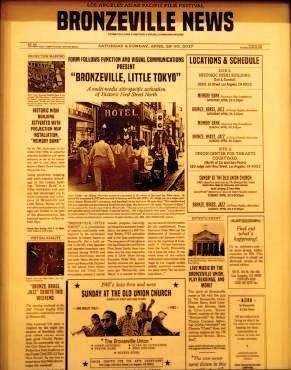
Actors Receive Standing Ovations
“Masao and the Bronze Nightingale” shows how history reshaped the entire city, even when events happened thousands of miles away. Dan Kwong is the co-writer and director of the play. He says that most performances during the onemonth run sold out.
“There were multiple standing ovations from culturally diverse audiences,” Kwong said. “We heard countless responses from people about how the story resonated with their own experiences. … Many people remarked on how it was not only very entertaining, it was informative, and how much they learned about the history of Bronzeville and Boyle Heights.”
Writers Shoot for the Big Screen
While discussions for future productions of the play are ongoing, writers hope “Masao and the Bronze Nightingale” will become a feature film. It would be a dream come true for Kwong who always had a vision for the production.
“We would like to see the play produced in many different parts of the country, sharing this hopeful and inspiring story with as many people as possible,” Kwong said. “There are many communities with histories of cross [cultural] solidarity and alliances similar to the one depicted in Boyle Heights in the play, and people need to know this history exists and that we can live in harmony with each other.”
Readers may watch video excerpts and learn more about the play and the period at Collegianwired@tumblr.com. ∂

1. Andrew Giorsetto think it is great that we are safe [wearing masks]. am excited for the day when the school says we are good [without] it. But understand precautions are needed just because who the heck knows what is going to [happen]. It is good they are taking precautions and thinking about the safety of both staff and students.
2. Briseda Garcia feel wearing facemasks is a neutral feeling. Outside of class, facemasks are suffocating. The facemasks during class are normal for any semester.

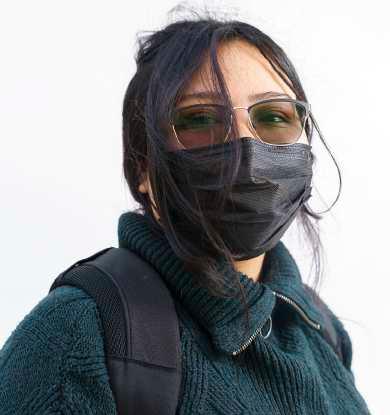
3. Henry Kensey don't mind [the mask] too much. I prefer to wear [it] in class. Because some people don't like to get [vaccines], I prefer to wear the mask when we [are] in class. But the problem is when [you] are asking questions to the professor you still have to take your mask down.
4. Kenneth Callahan honestly hate facemasks because interpersonal communication is not normal. The basic interaction is not introduced with facial expressions.

5. Tobias Goodlife don’t like facemasks. The masks should be a personal choice. Nobody is breathing properly. I feel that facemasks should not be worn. I respect everyone's right.
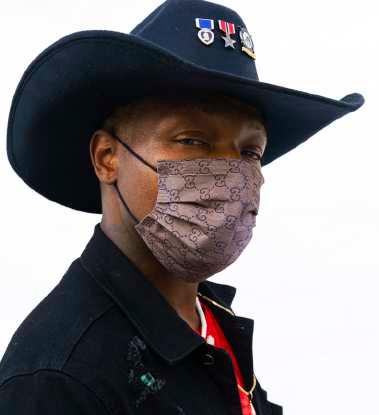


6. Sonompreet Kalur
For me there are so many reasons to wear a mask. First is for the COVID-19 and you need to take care of your health and the people around you. Second reason is the scorching sun out there and its kind of saving my face and my skin. The third reason is [that it] is mandatory somehow, so that's it! Thank you, have a good day.
48 49 Collegian Times SPRING 2022 SPRING 2022 Collegian Times
2. BRISEDA GARCIA
5. TOBIAS GOODLIFE
1. ANDREW GIORSETT0
4. KENNETH CALLAHAN
3. HENRY KENSEY
EACH MASK TELLS A STORY...
6. SONOMPREET KALUR
PHOTOS BY LOUIS WHITE

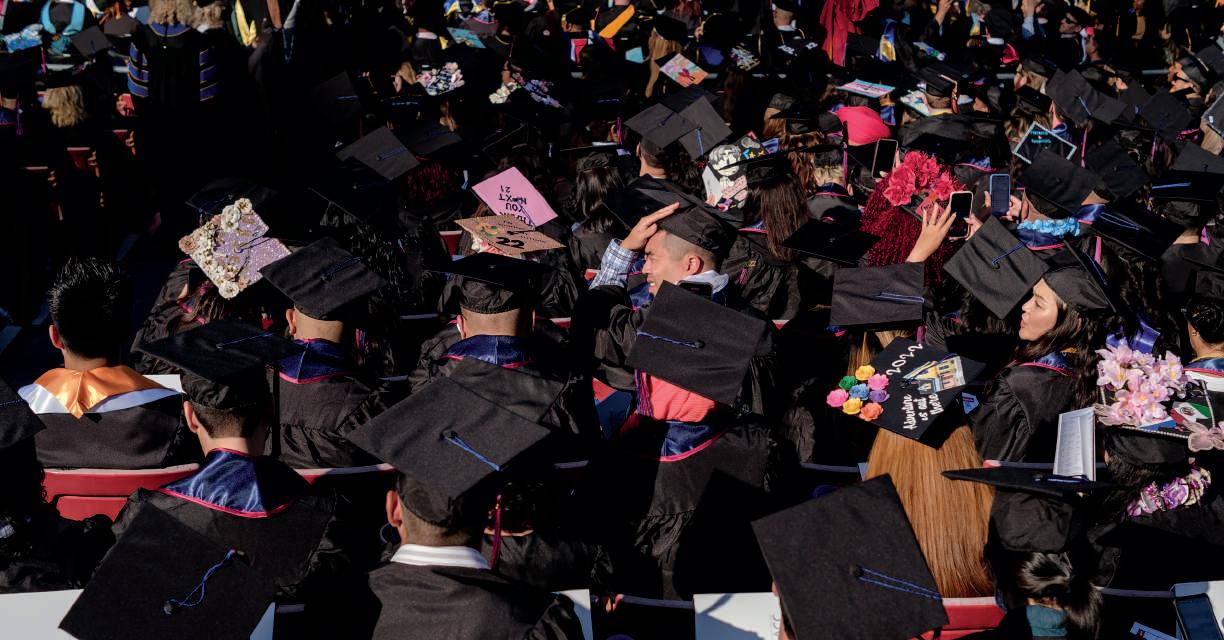






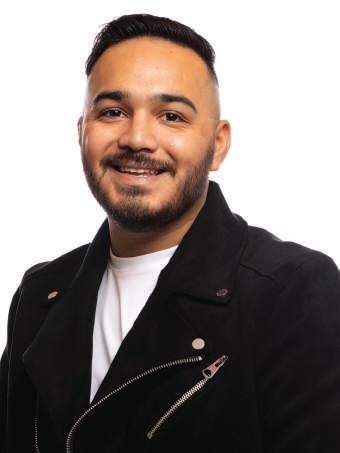
L.A. CITY COLLEGE GRADUATING CLASS OF 2020, 2021 AND 2022
FIRST LADY OF THE U.S., JILL BIDEN 50 Collegian Times SPRING 2022 @REACHLA @REACH_LA /REACH.LA reachla.org HIV / STI TESTING PrEP PRESCRIPTION FREE HIV / STI TESTING PrEP PRESCRIPTION FREE SCHEDULE AN APPOINTMENT : ASK US HOW TO EARN UP TO IN GIFT CARDS & PRIZES ! #StopHIVTogether
“ON BEHALF OF MY HUSBAND, THE PRESIDENT, AND ME— CONGRATULATIONS GRADUATES.”









 By Joan Mao
By Joan Mao
 By Christian Chavez
By Christian Chavez





















































 BY CHRISTIAN CHAVEZ
BY CHRISTIAN CHAVEZ






 BY SORINA SZAKACS
BY SORINA SZAKACS




































